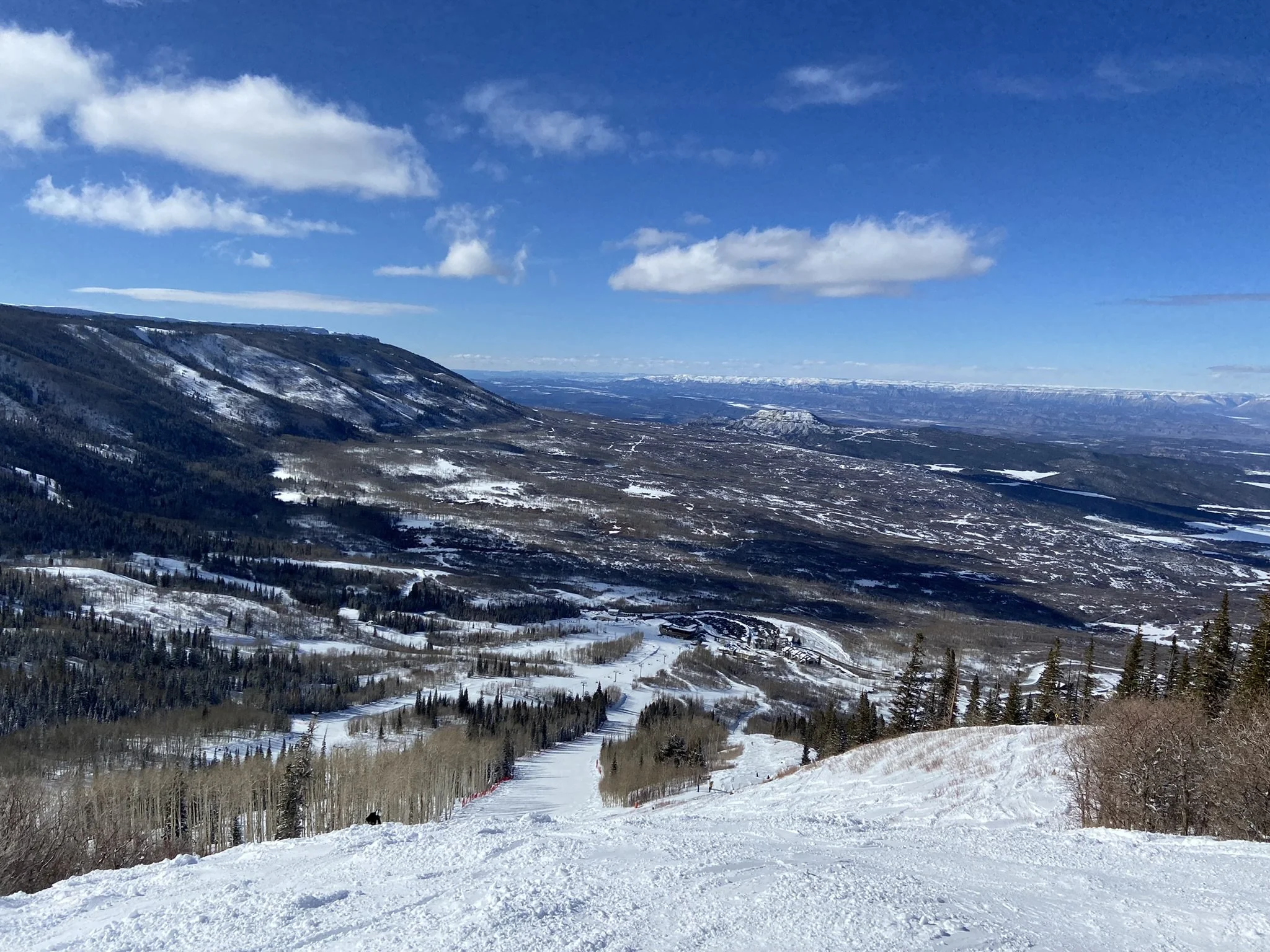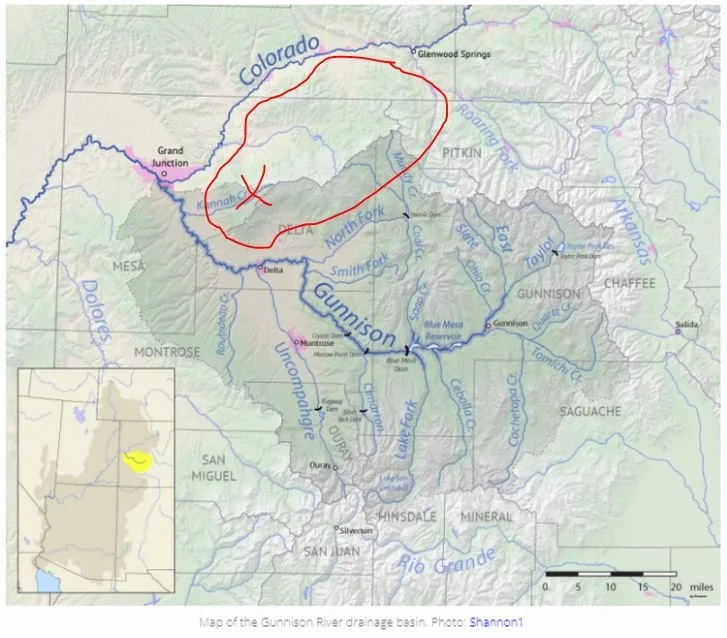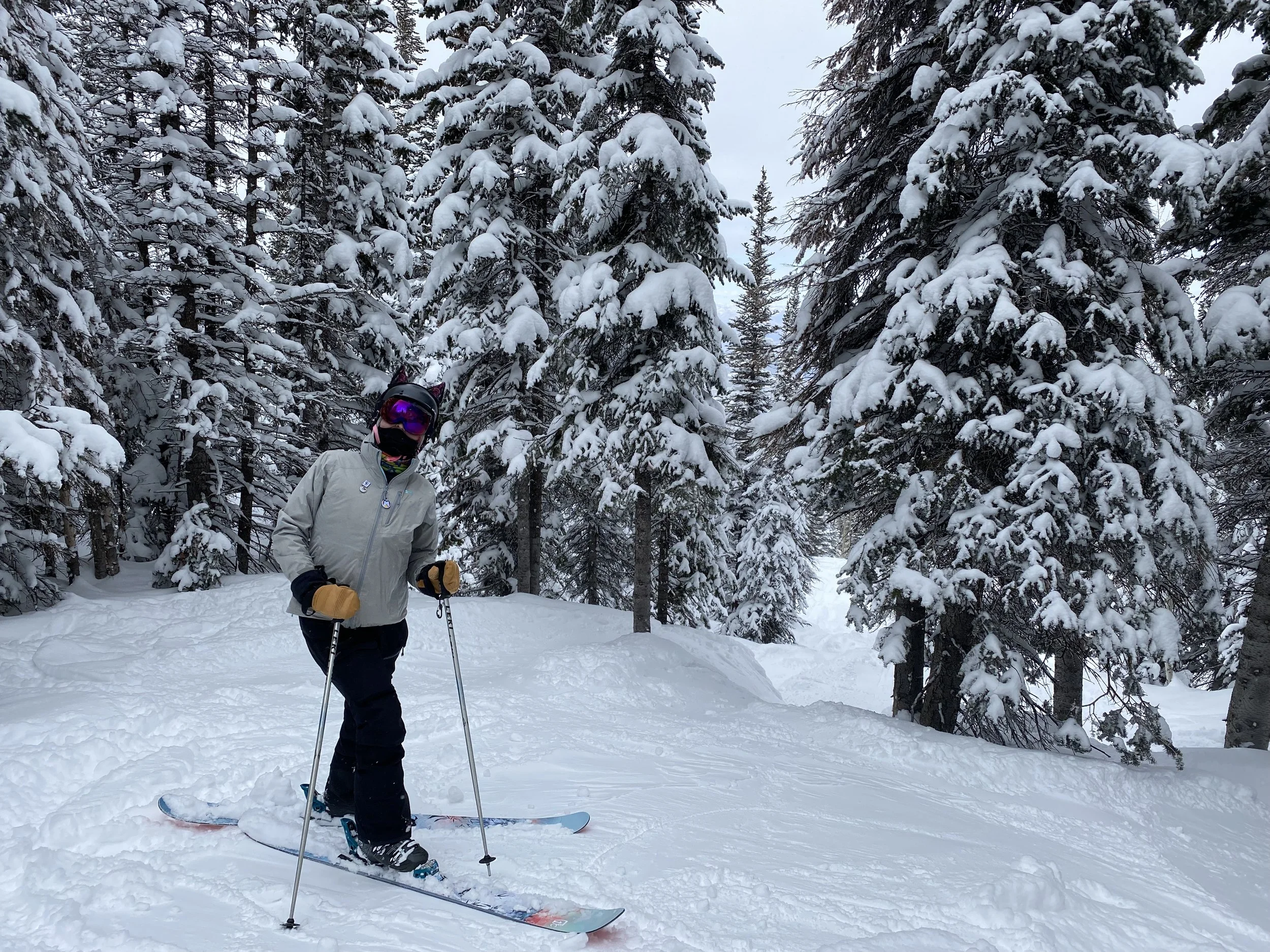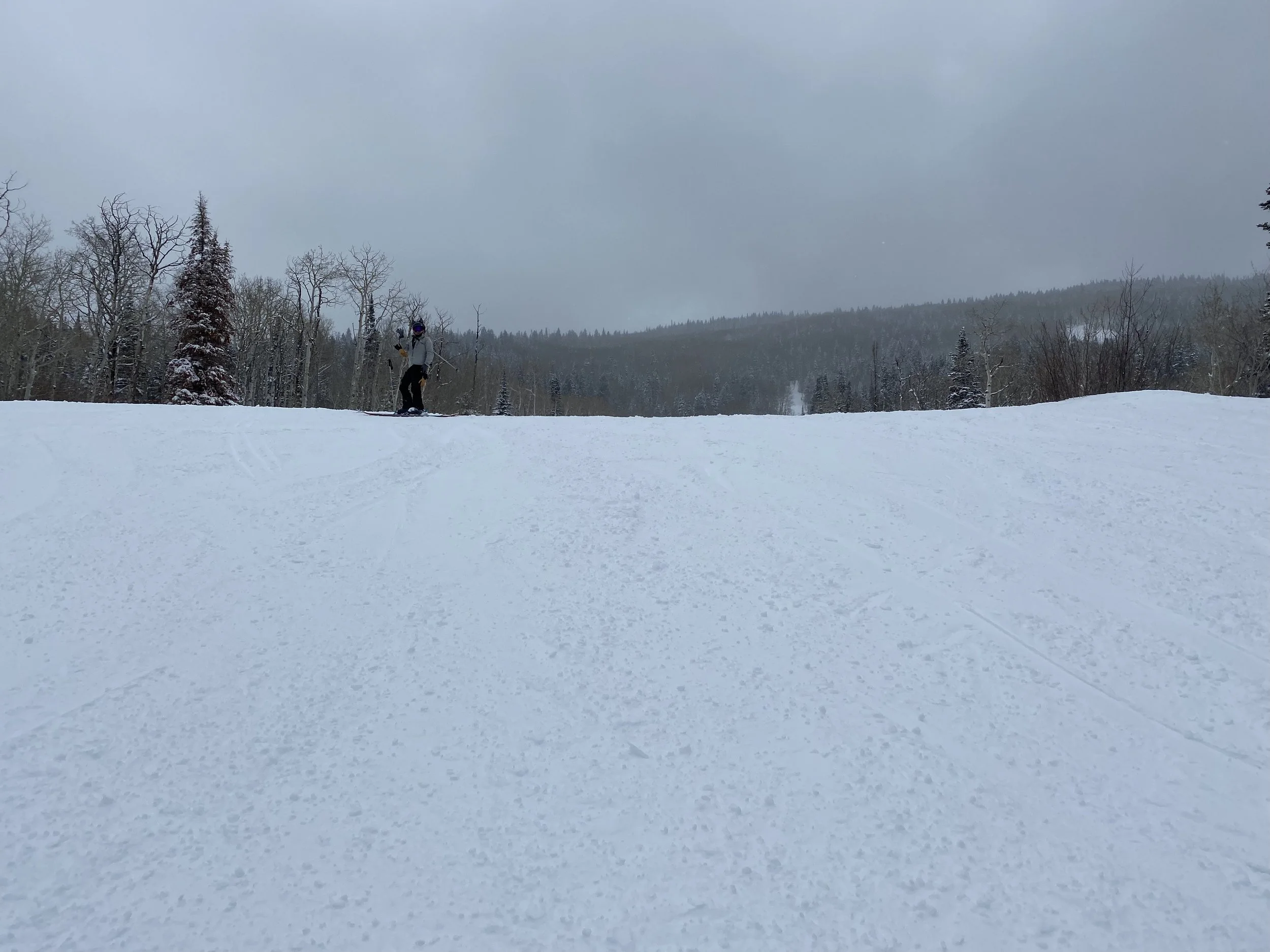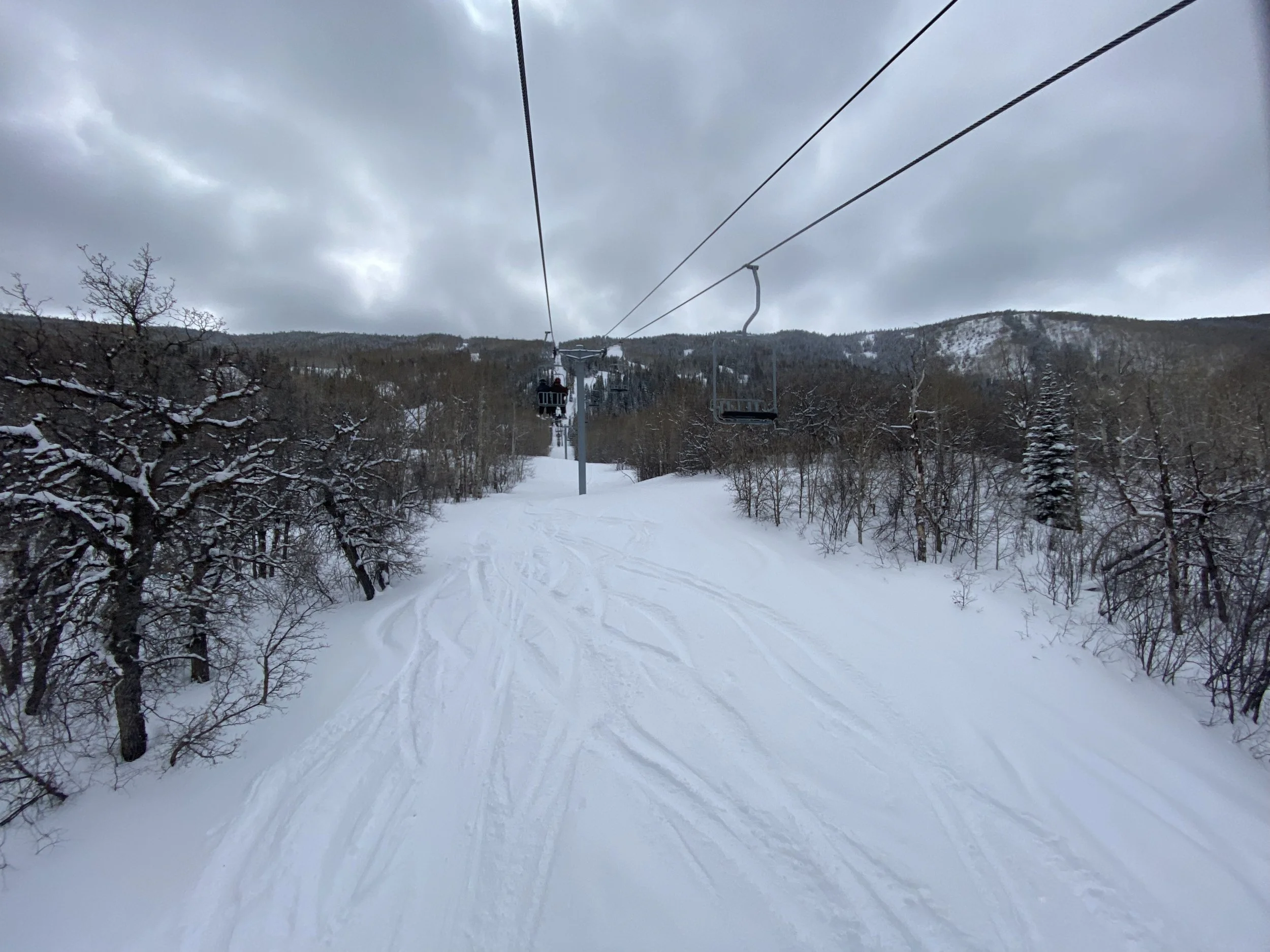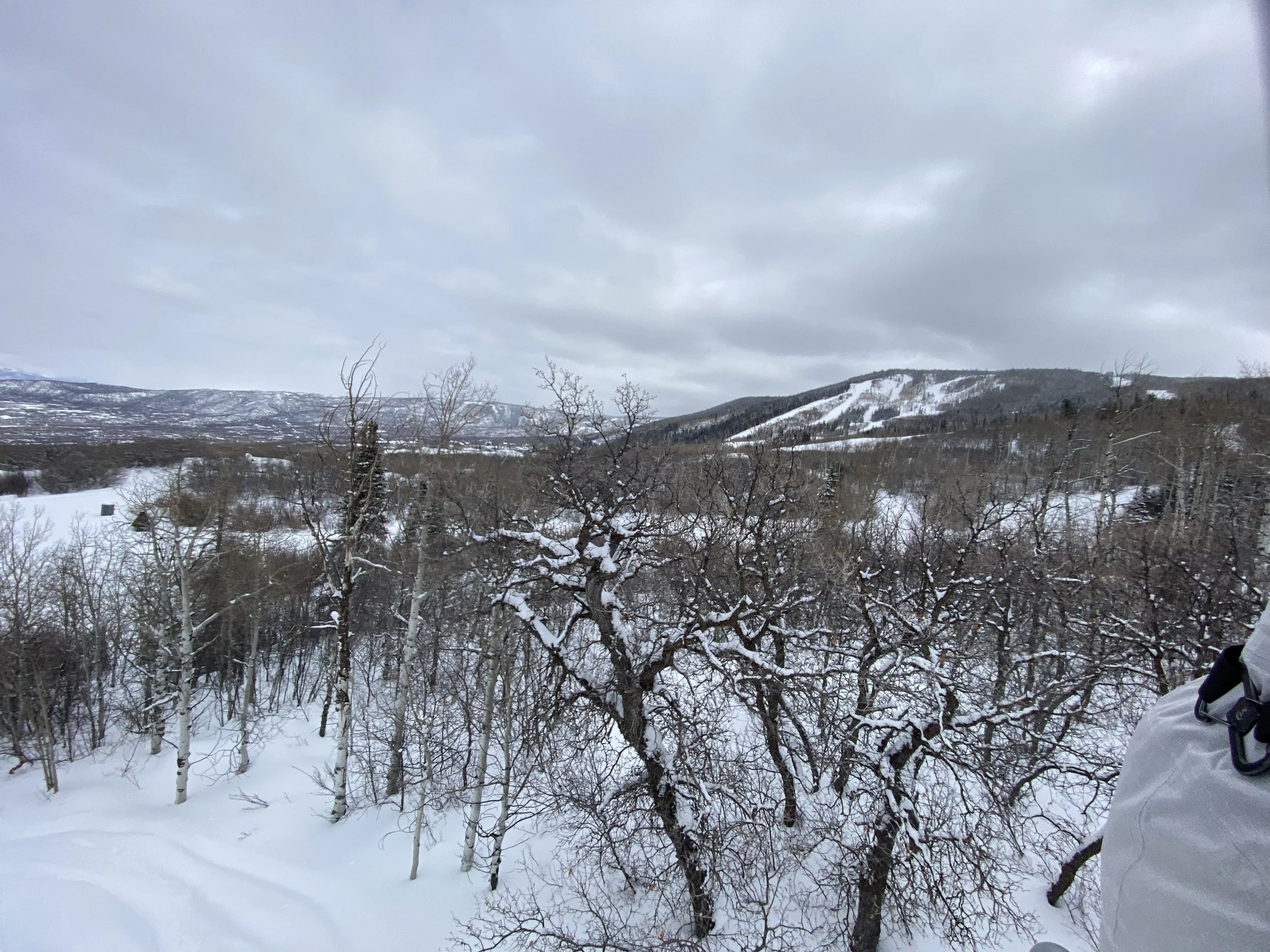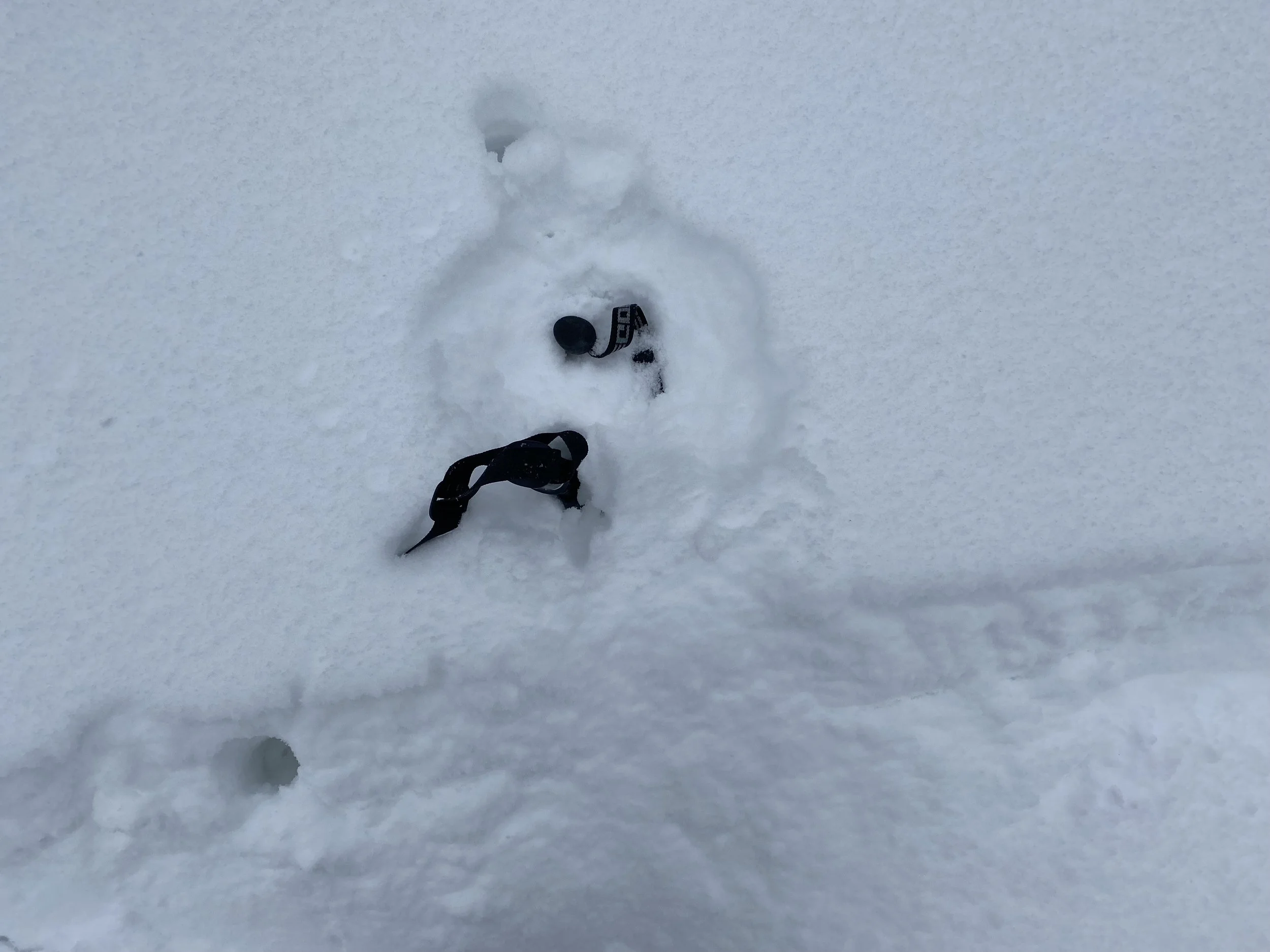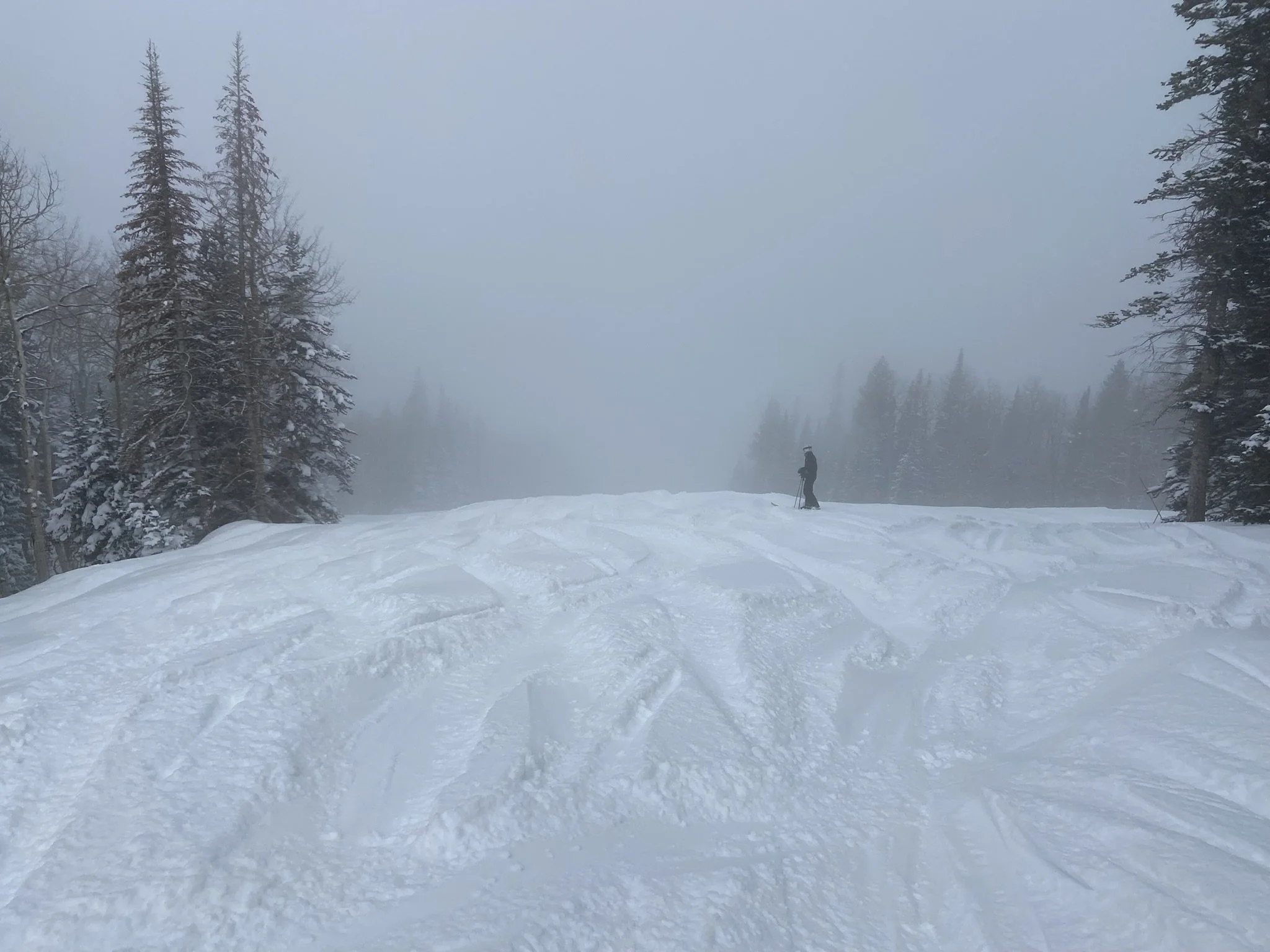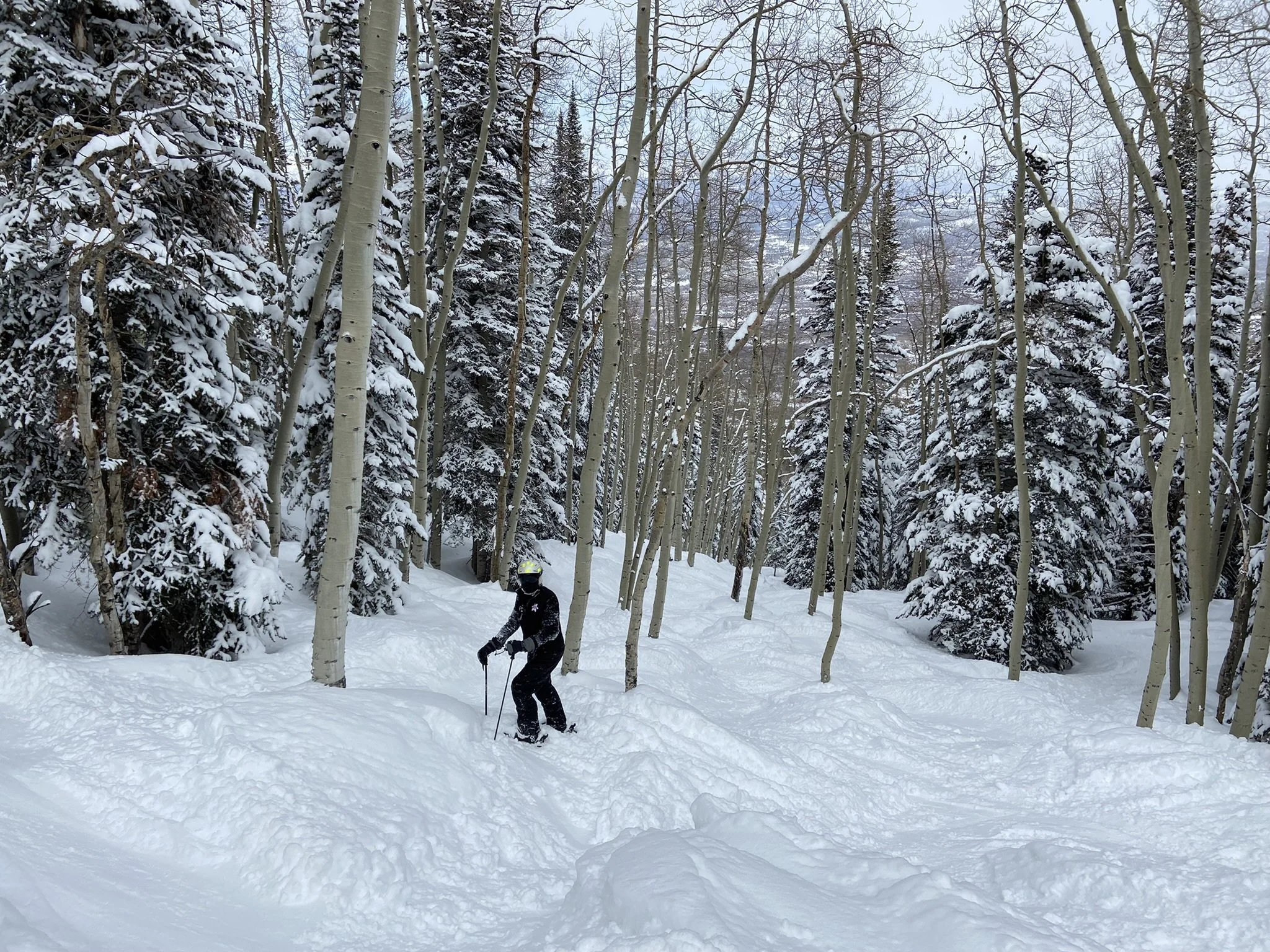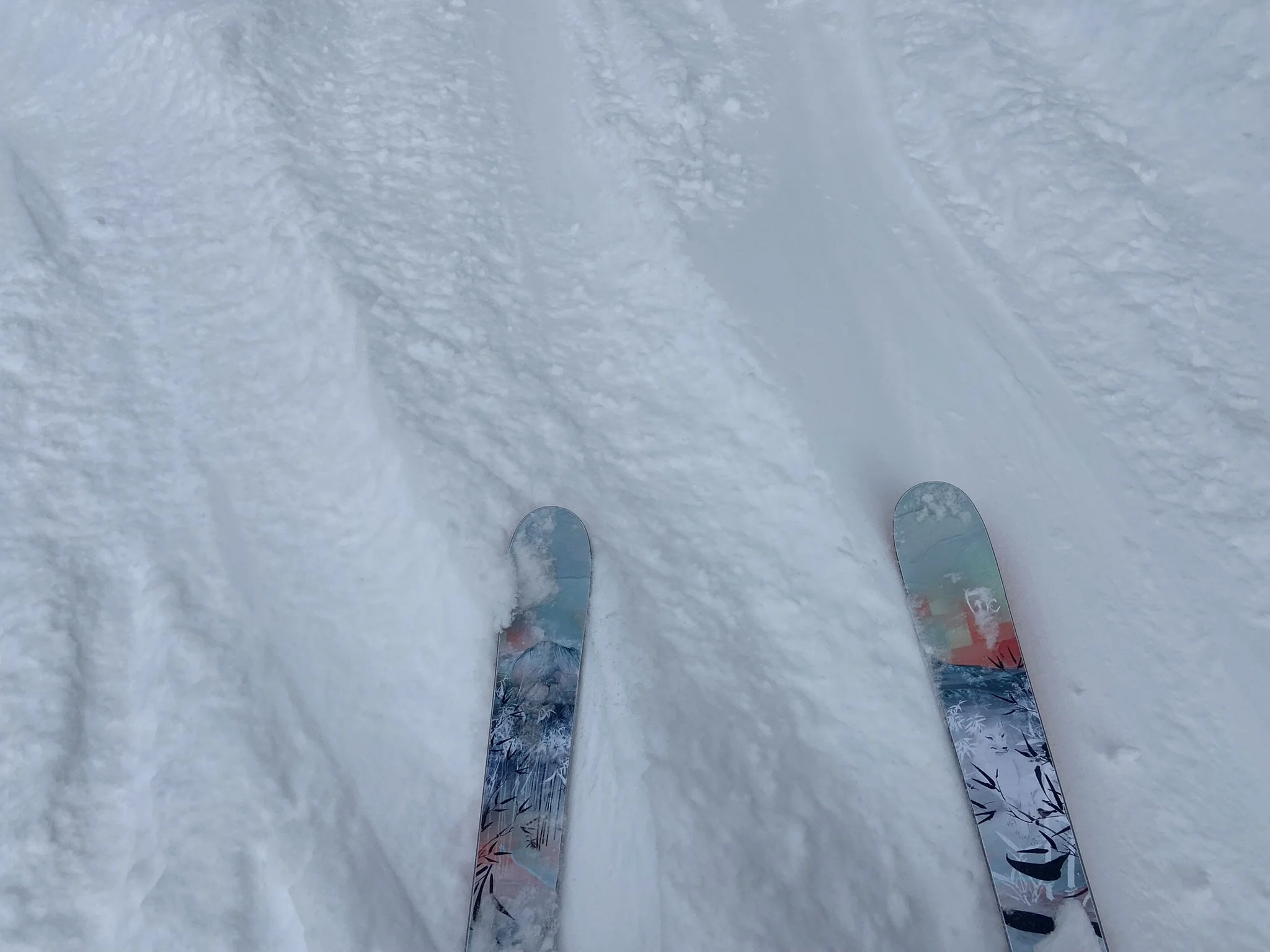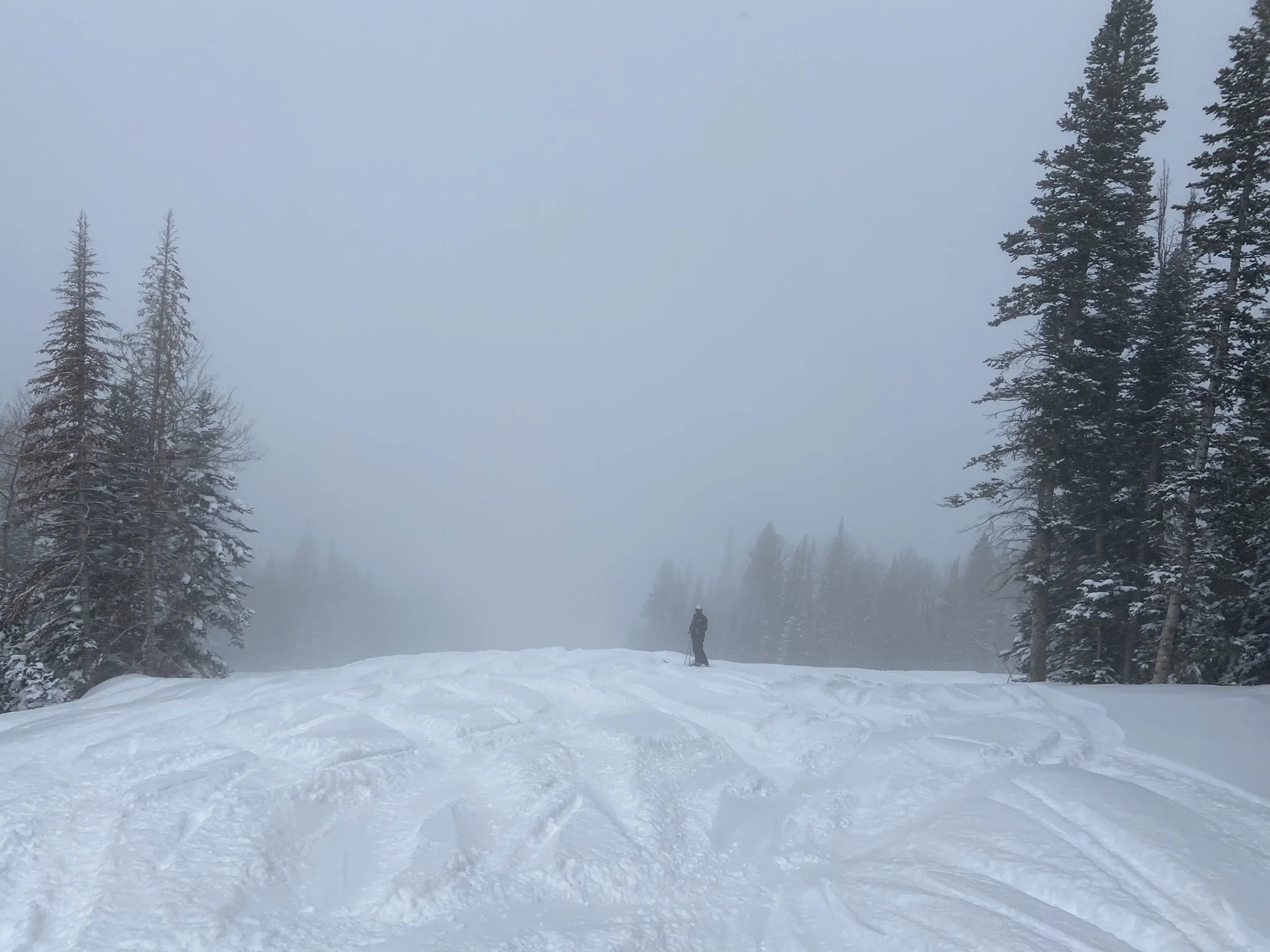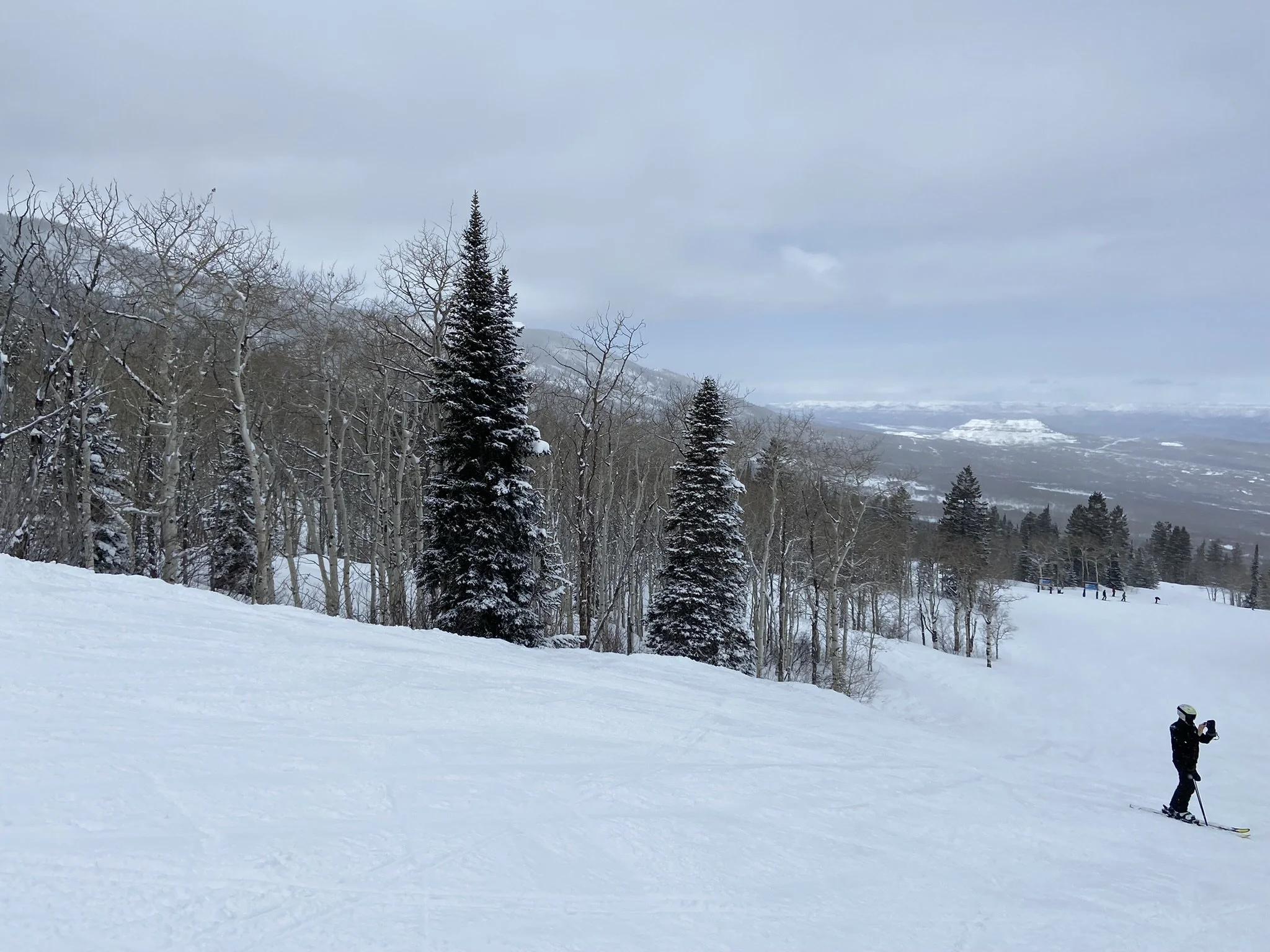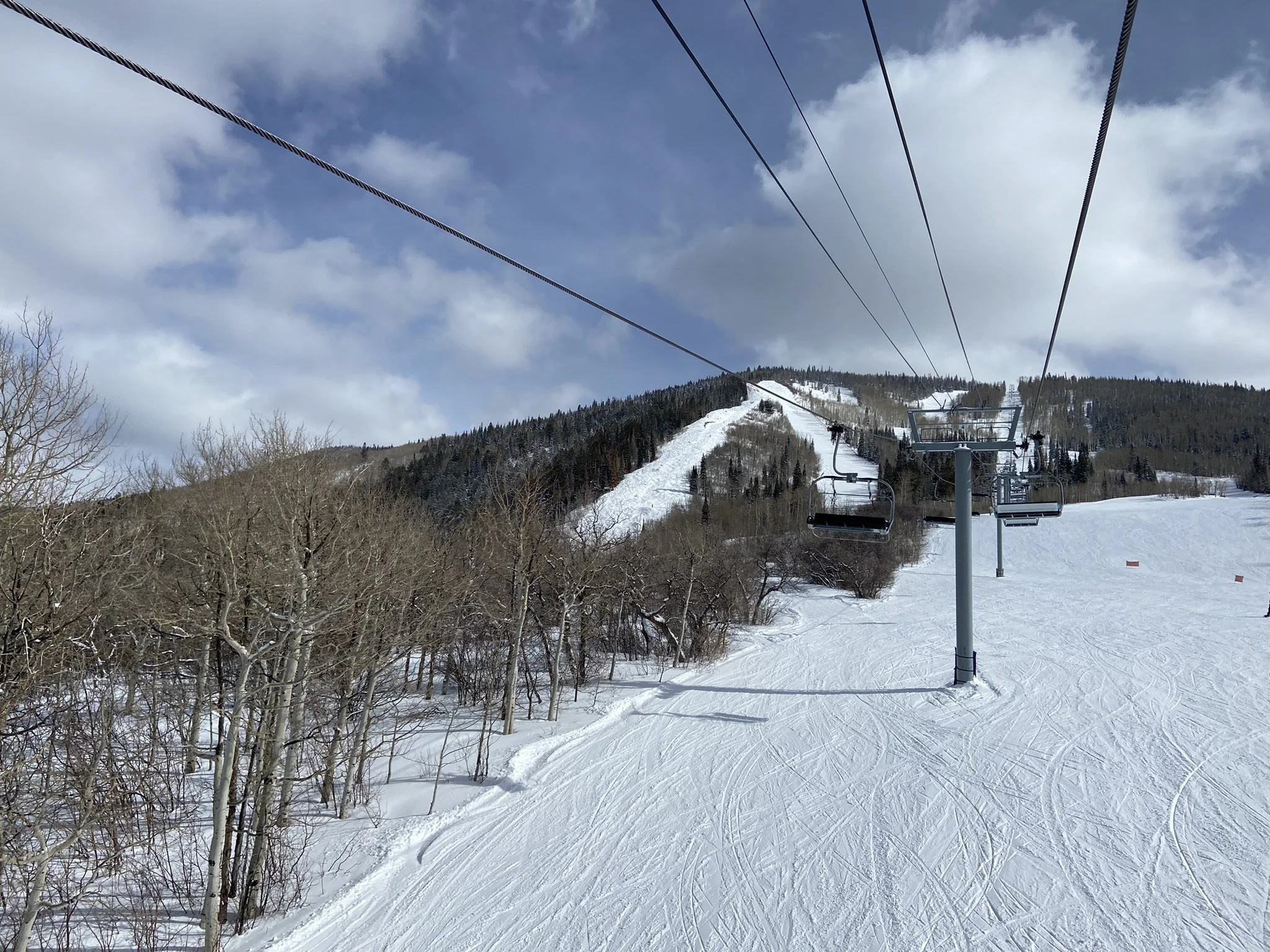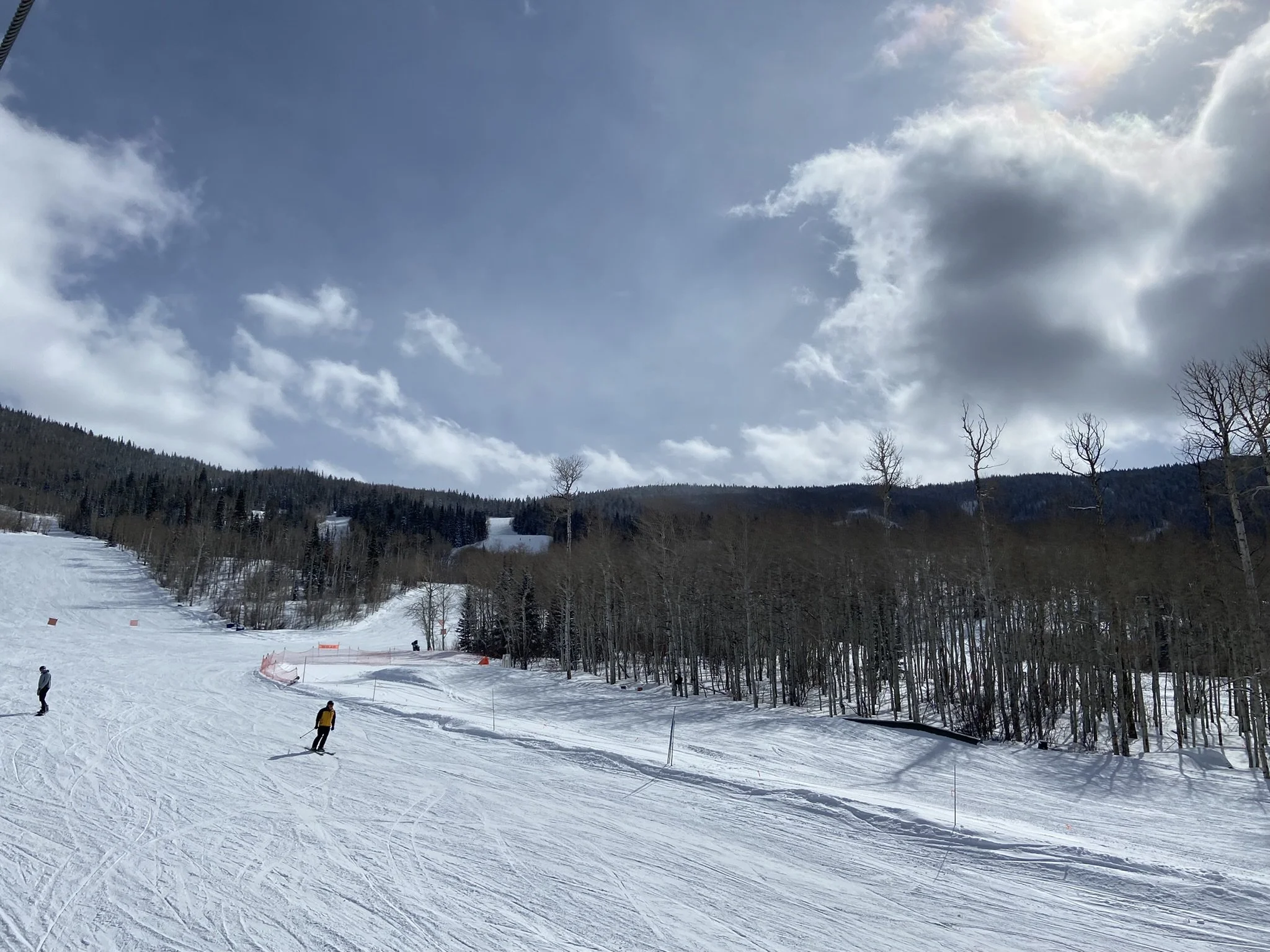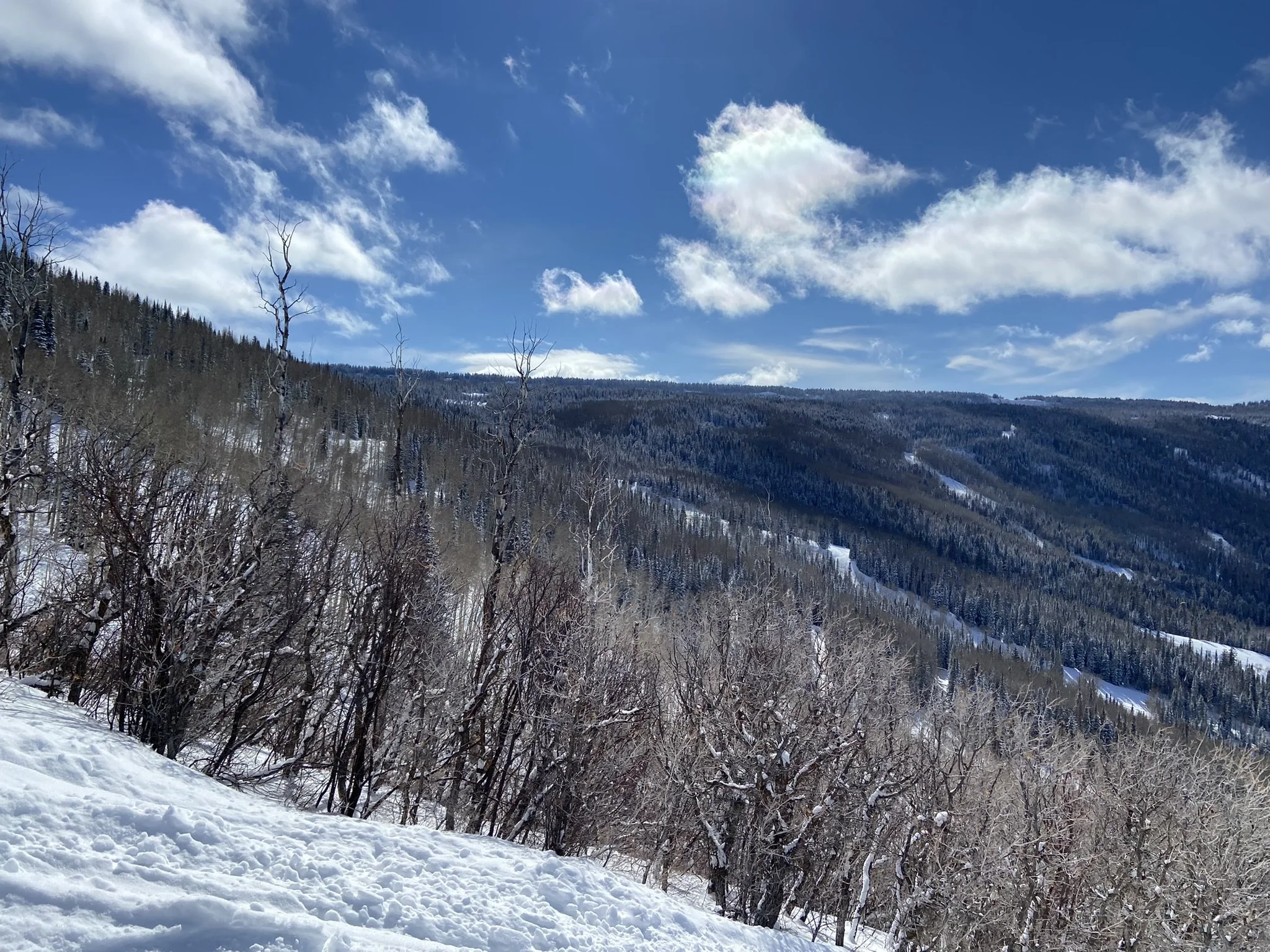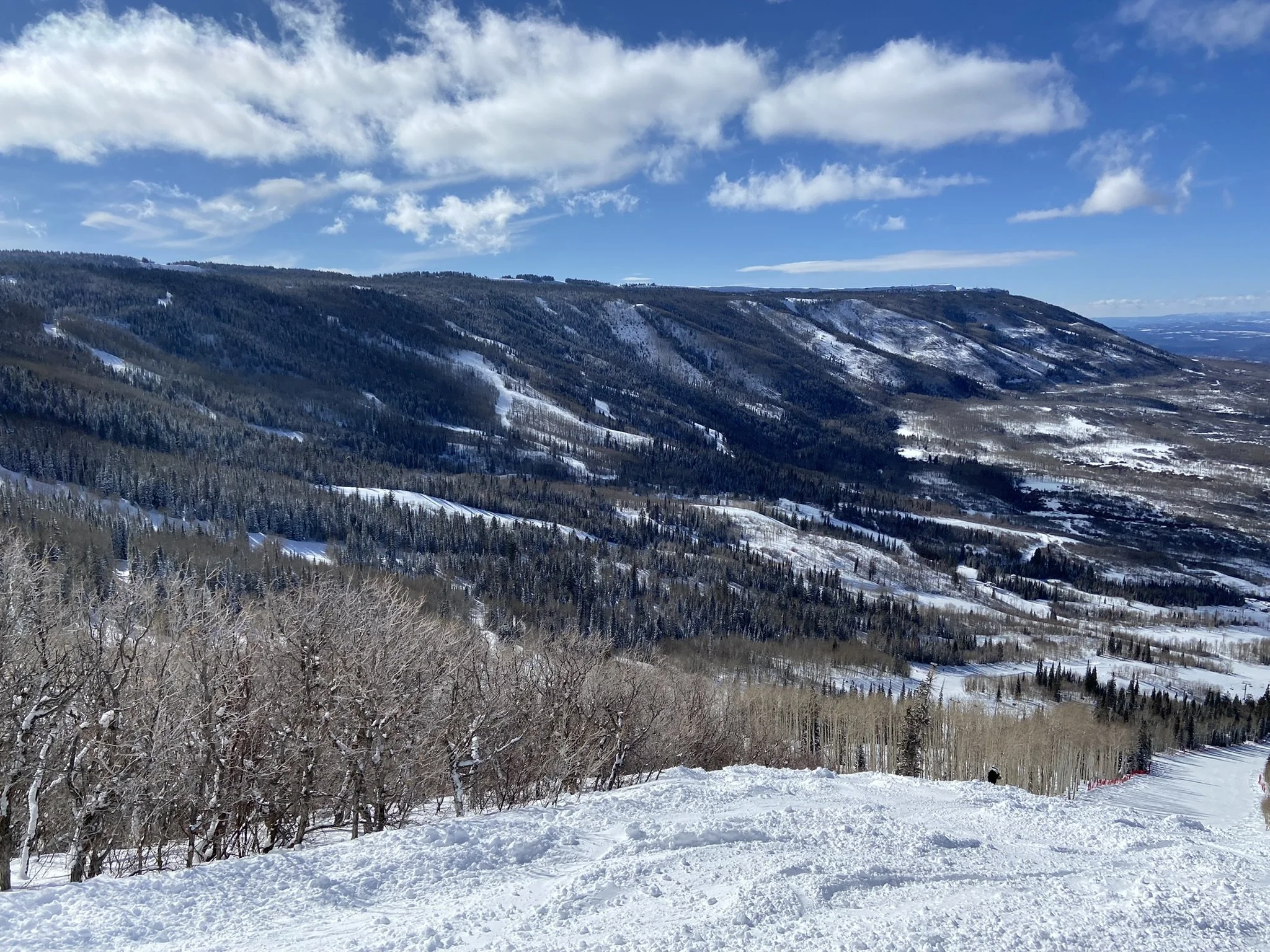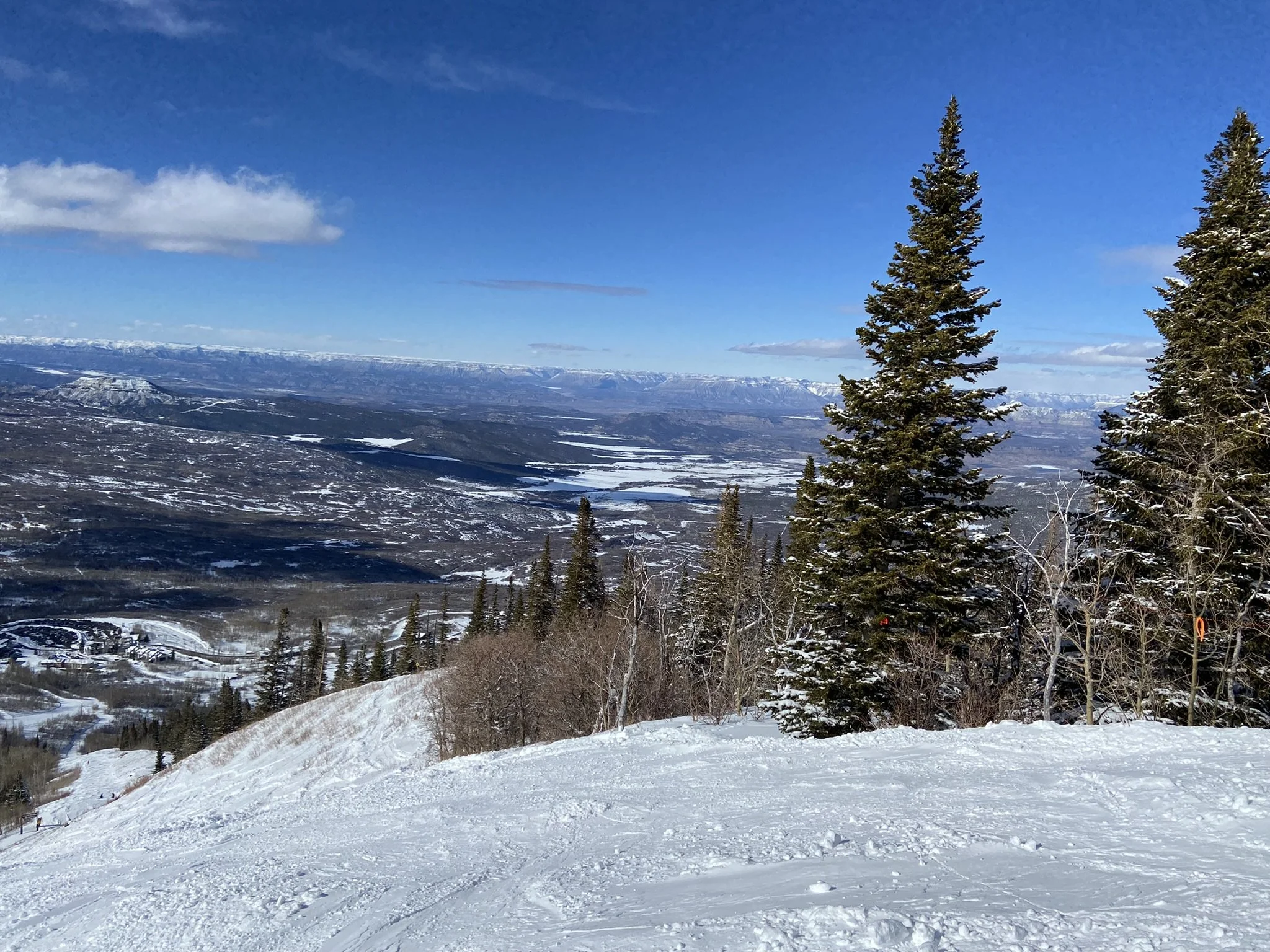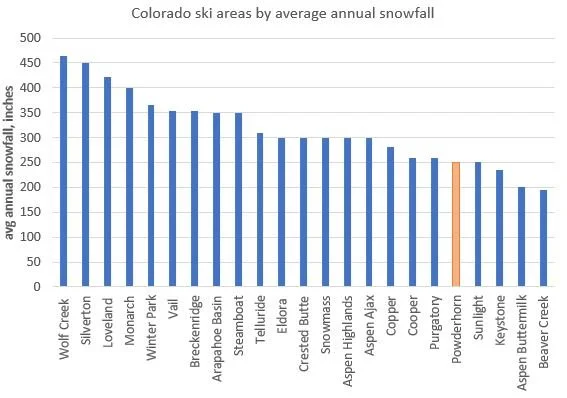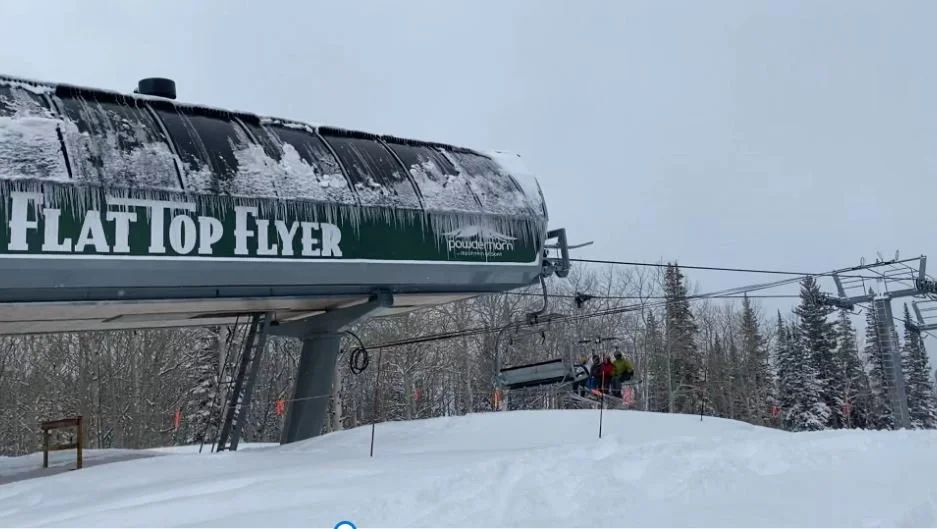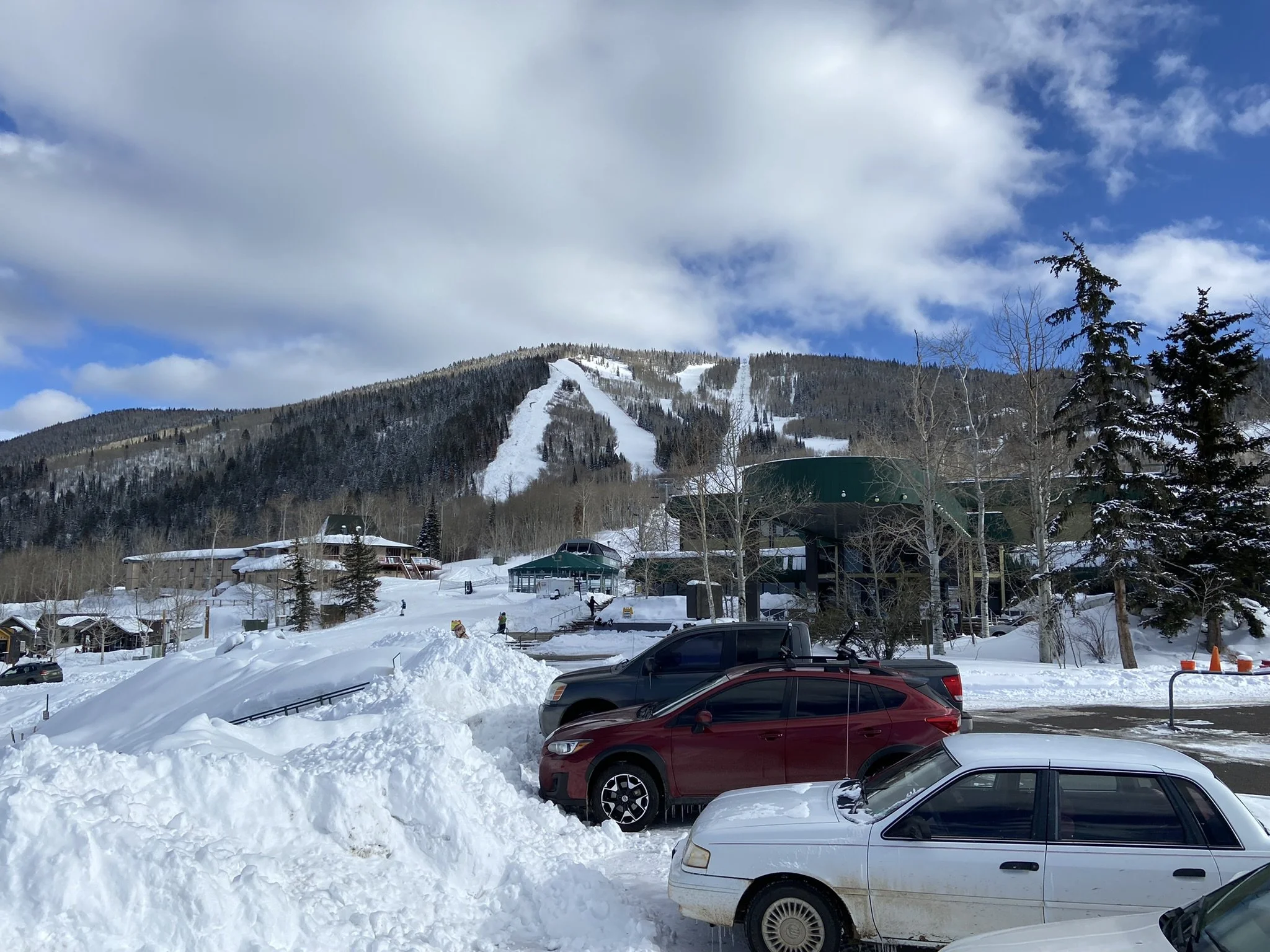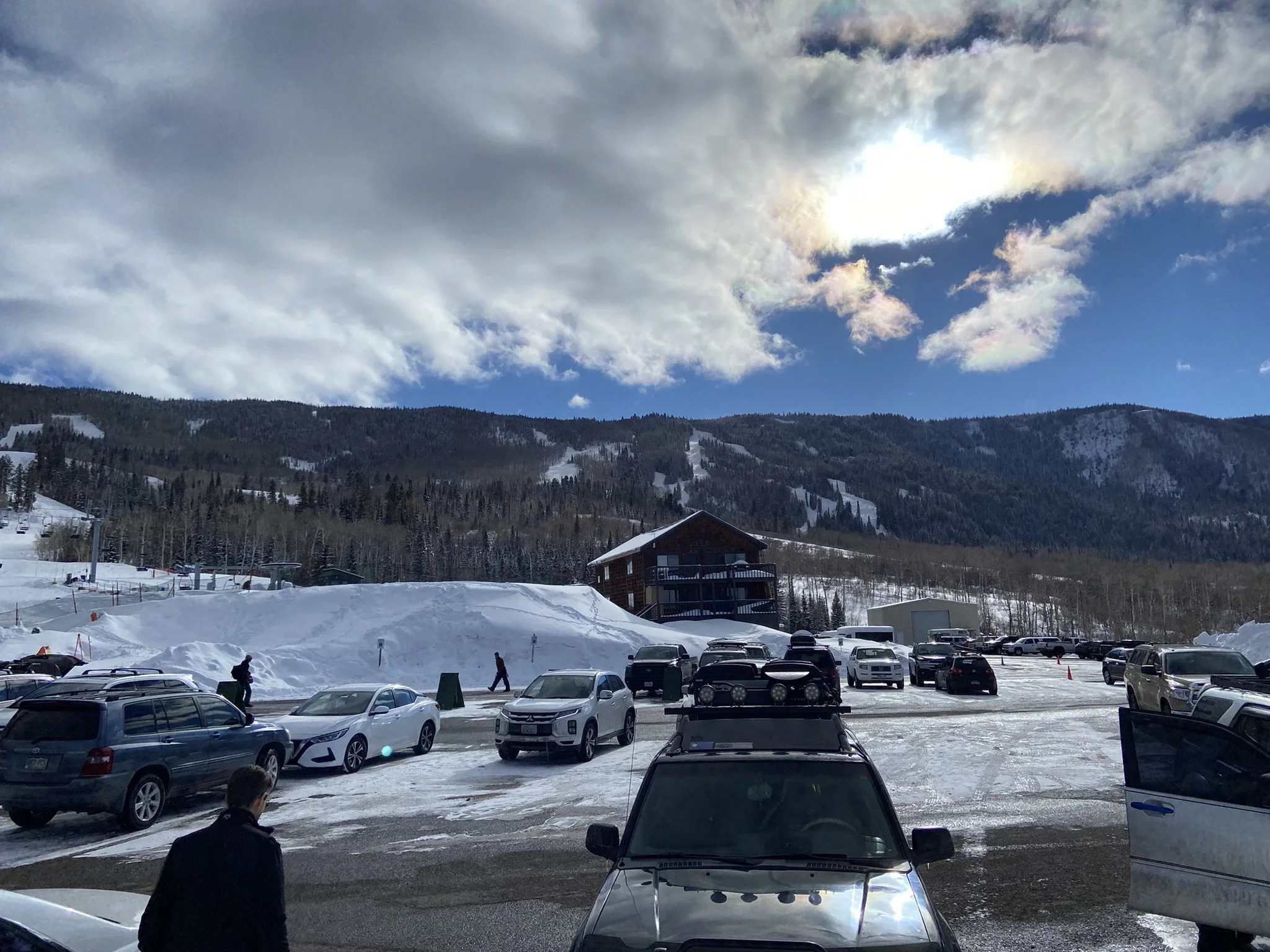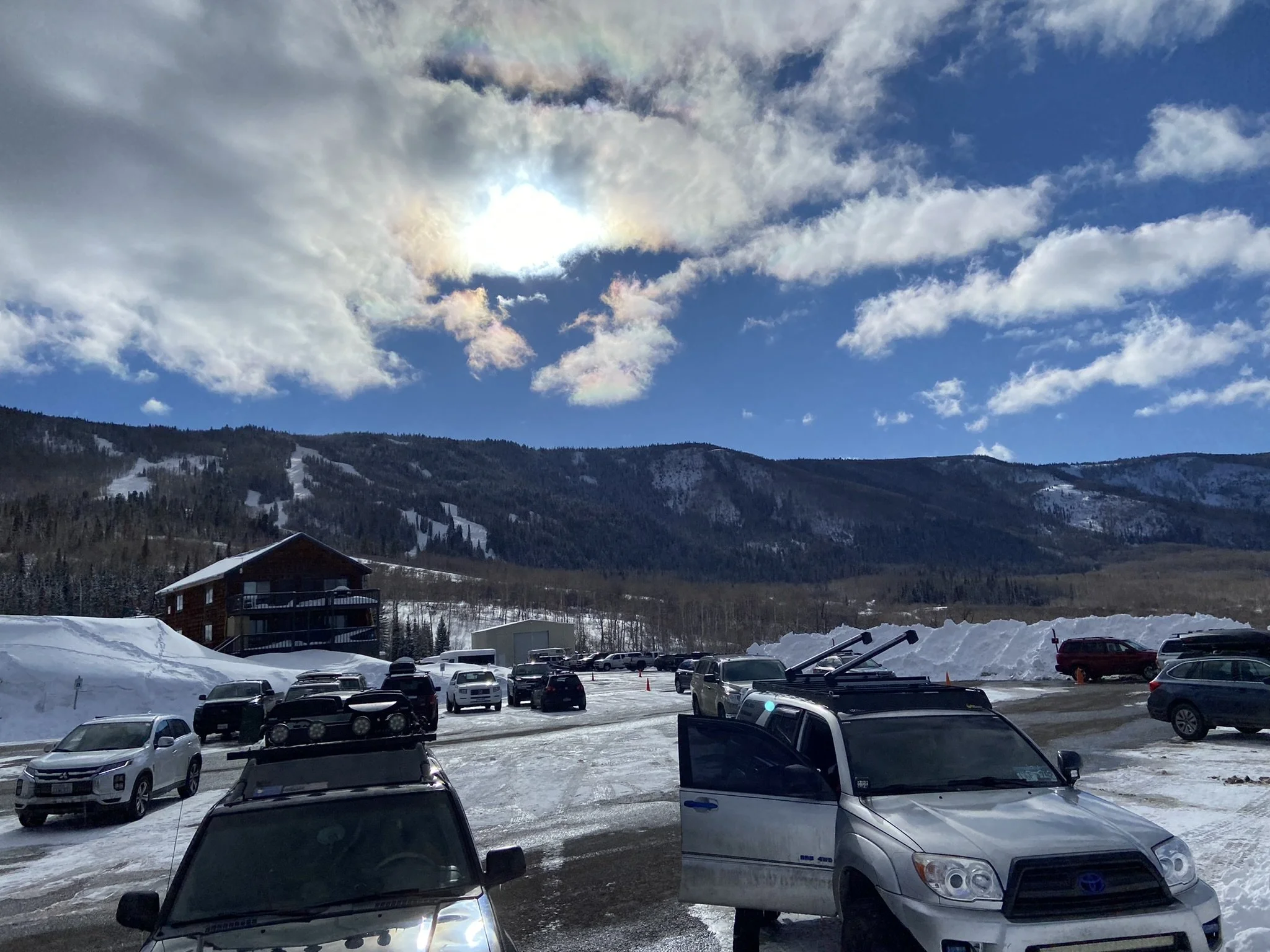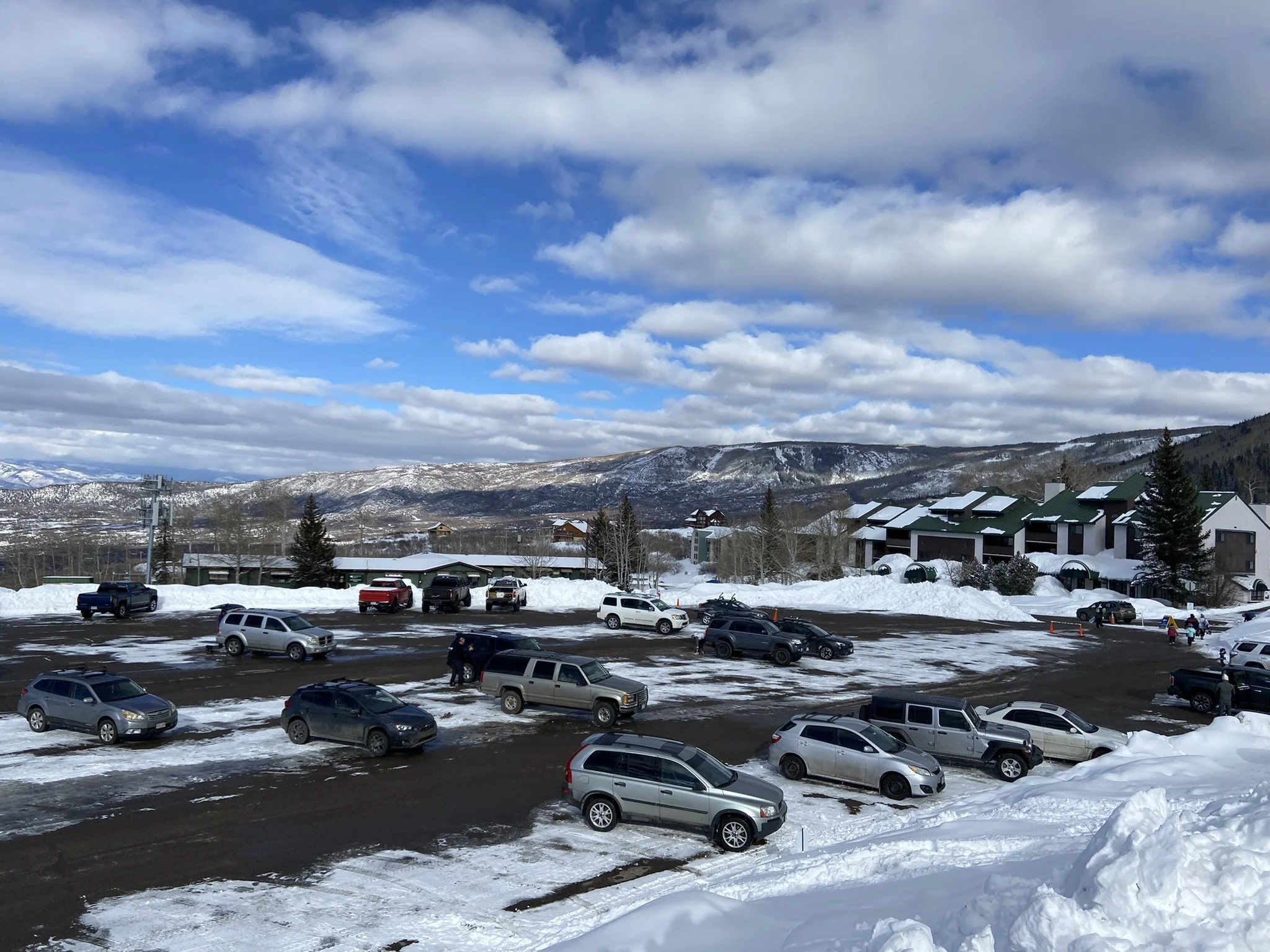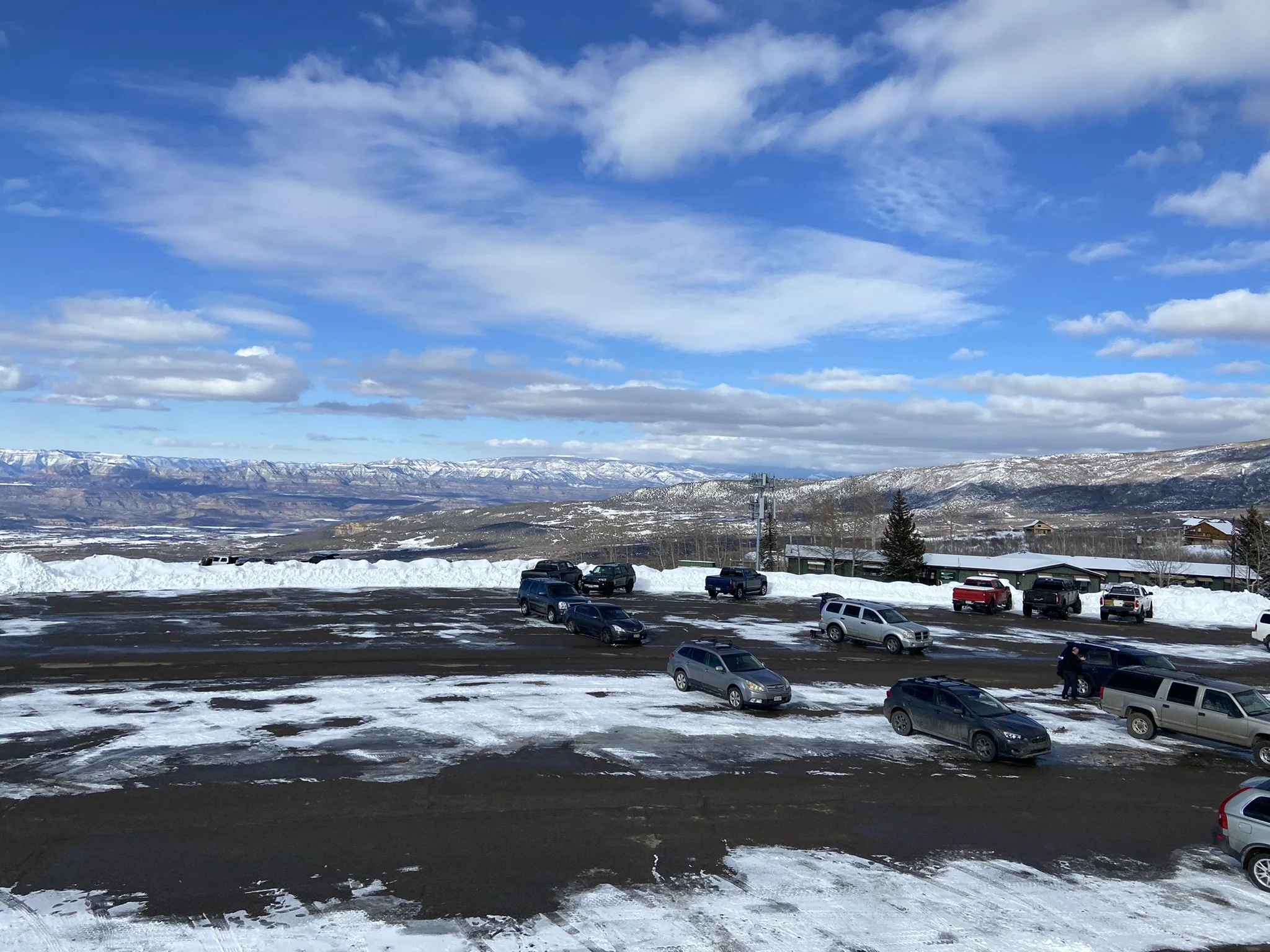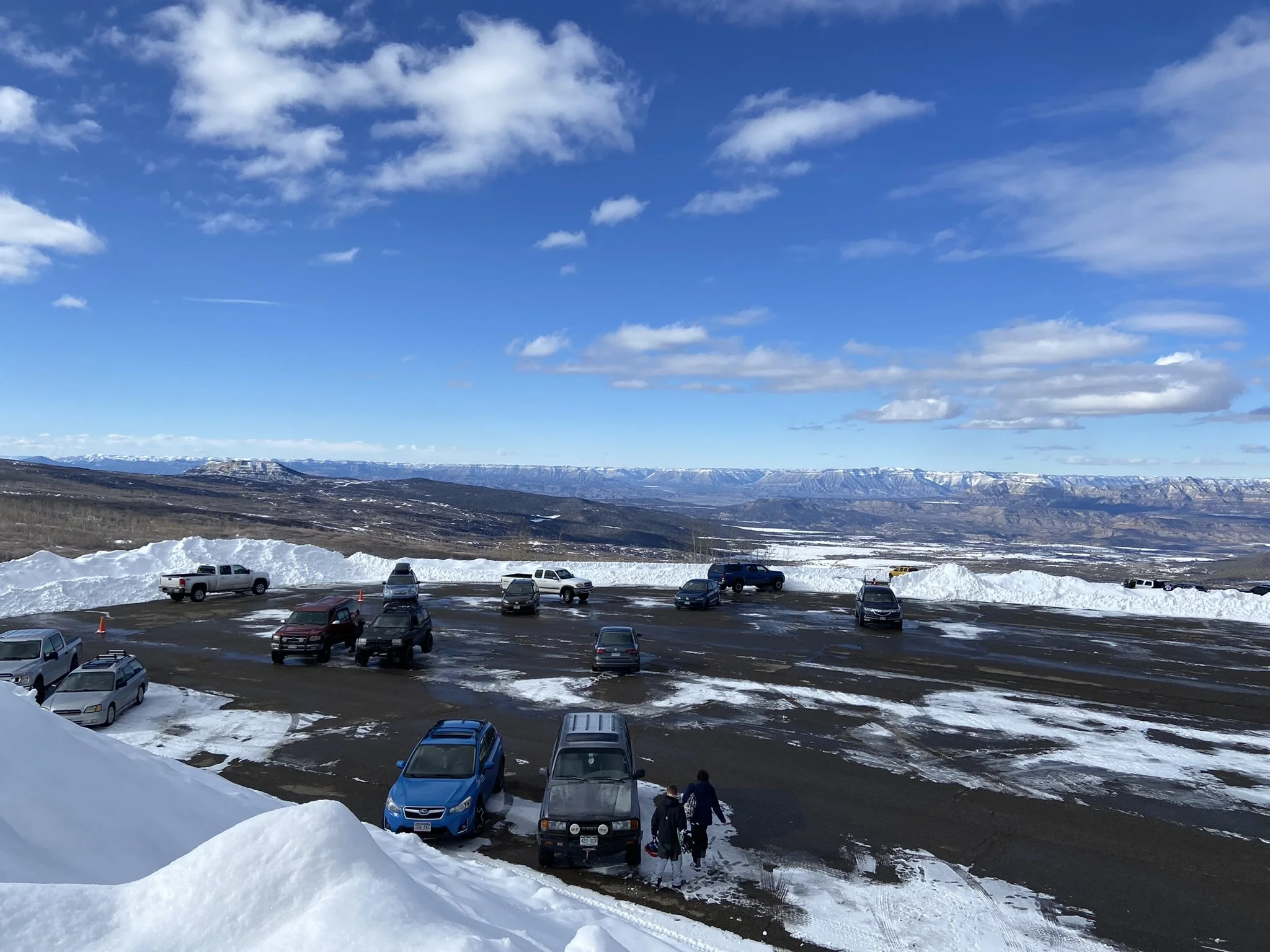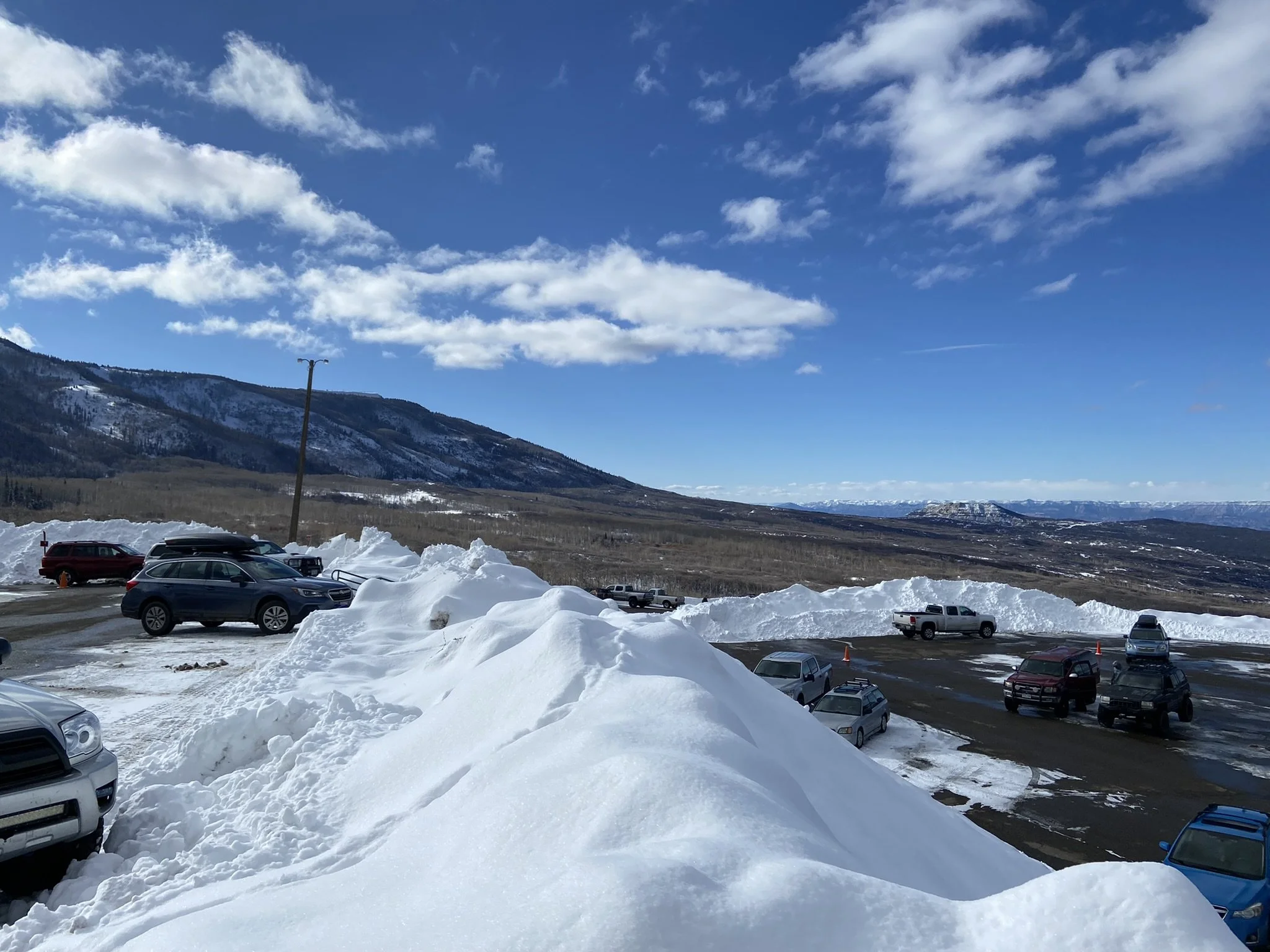
2022.03.10 powderhorn
|| new favorite place !!
〰️
|| new favorite place !! 〰️
Powderhorn Mountain Resort: Amelia’s new new favorite place


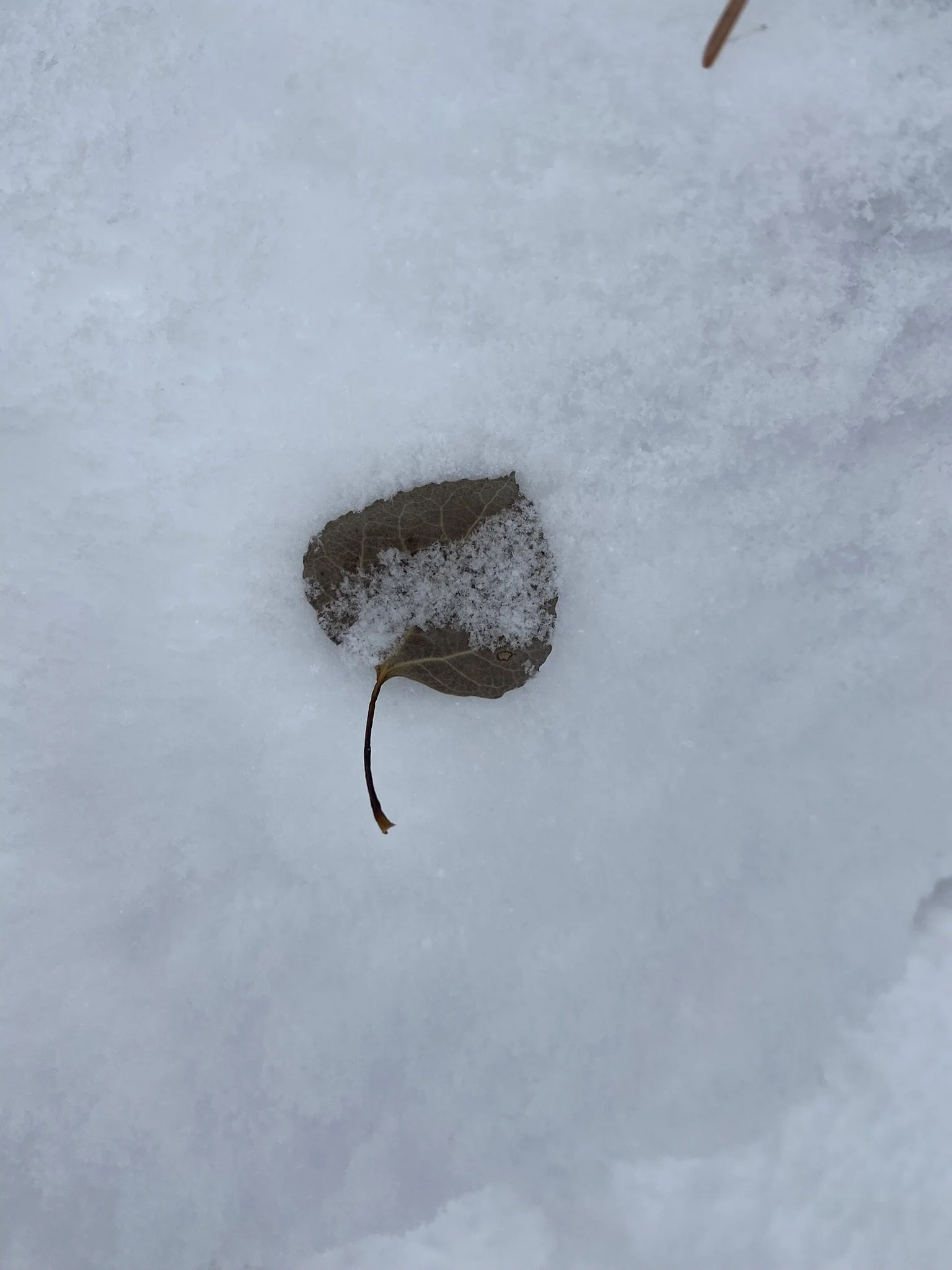

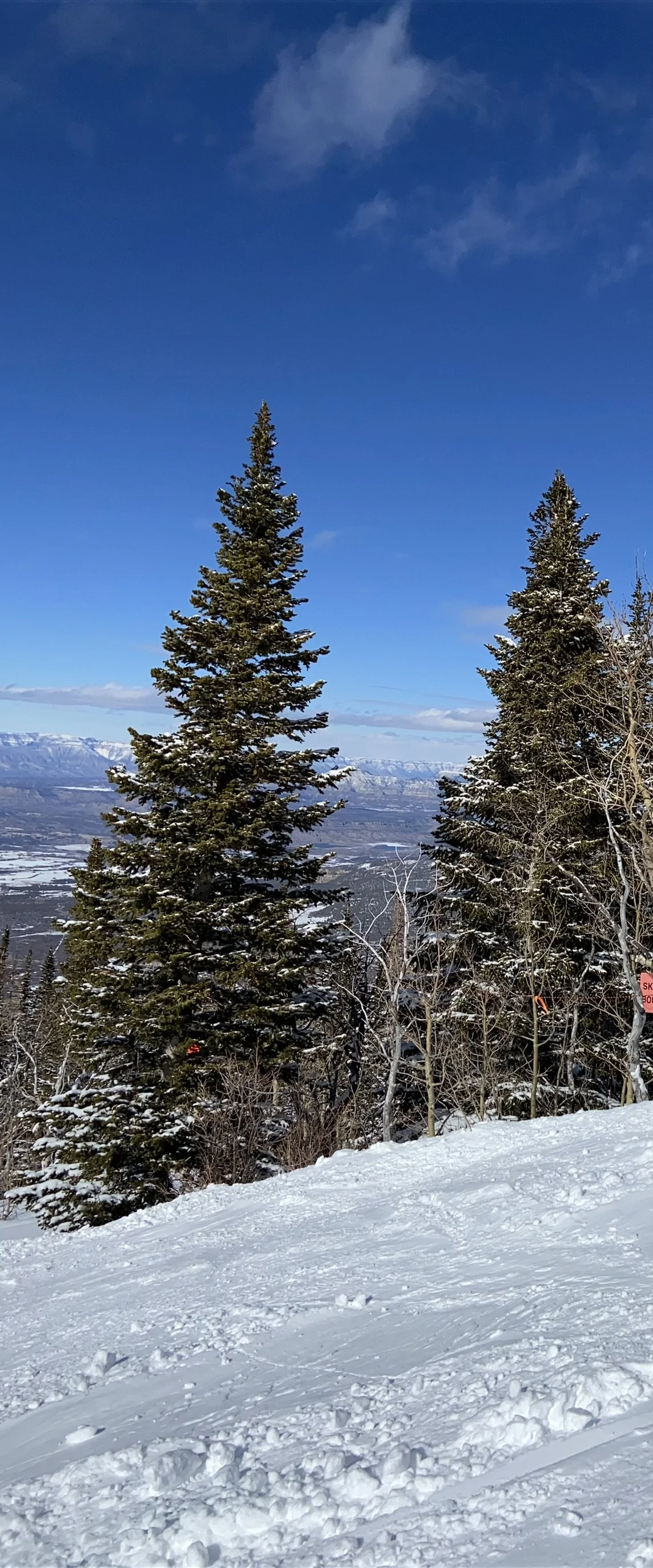
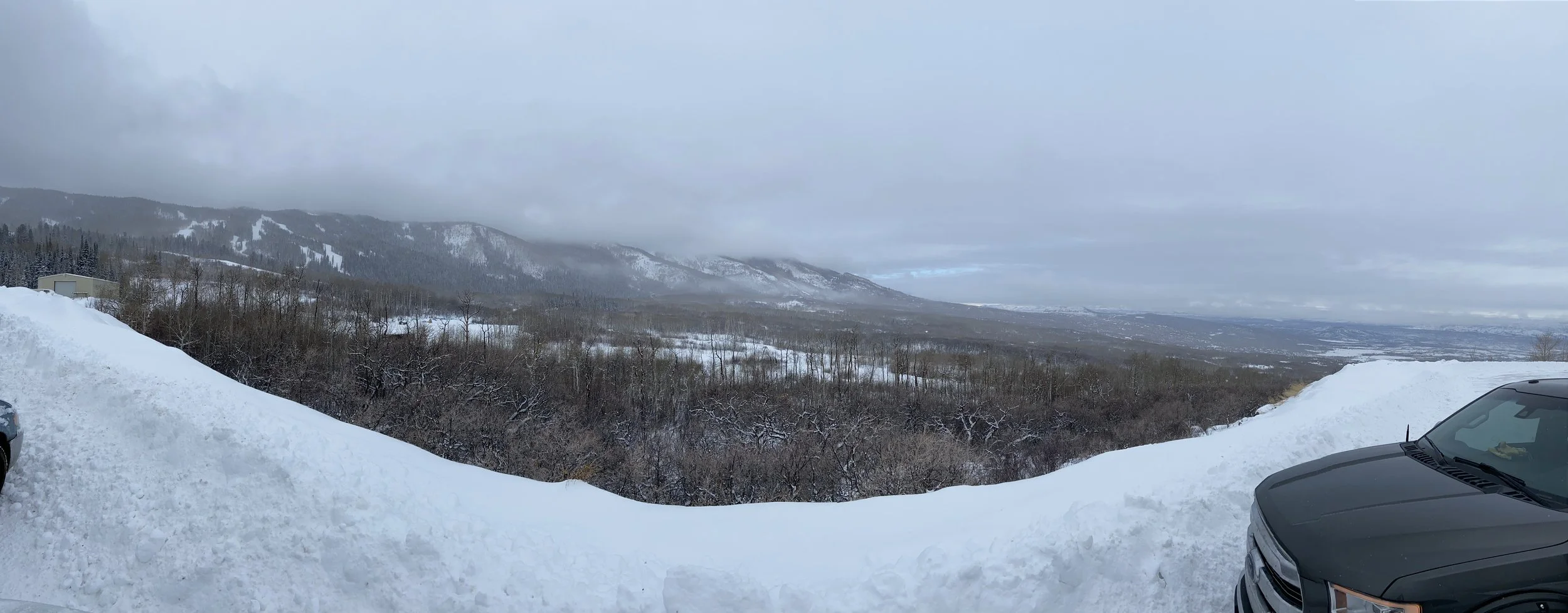
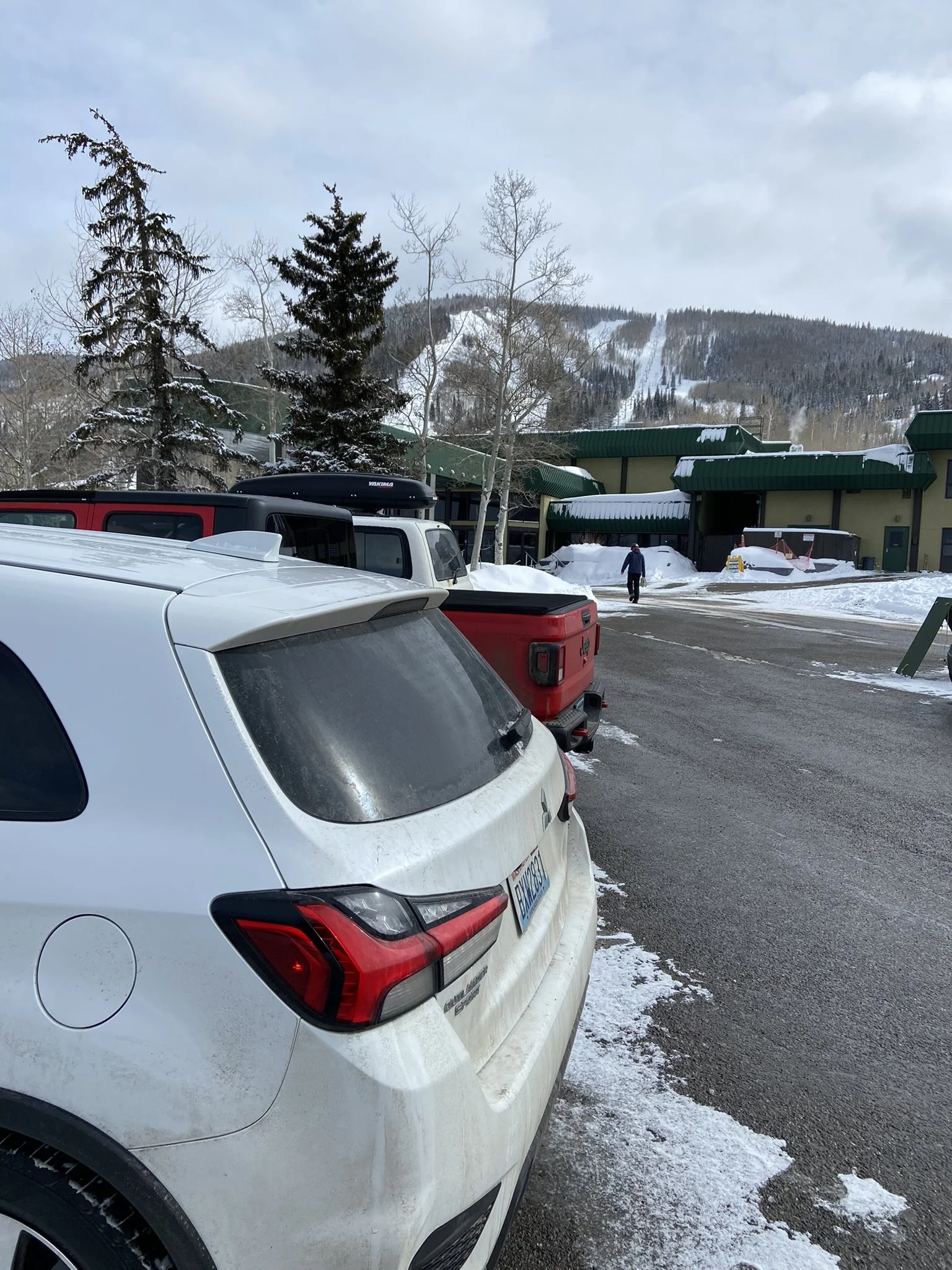


Powderhorn Mountain Resort is a low-traffic, low-profile ski area in the far western region of Colorado, near the town of Grand Junction (population ~ 60k, elevation ~ 4,583 feet)
Positioned between 8,000 and 10,000 feet in elevation, Powderhorn’s stats are not remarkable by Colorado standards - Less than 2,000 vertical feet under only two main chair lines. But what it lacks in size, it makes up for in charm.
This is an easy-going, low-frills mountain with all the amenities you want, without all the hassles you don’t.
Location
Powderhorn is located west of most Colorado resorts, and one of the longest drives from Denver. It is one of the few CO resorts not near the divide (Figure 1)
Figure 1: Our Colorado road trip map.
Powderhorn was the Western-most area on the journey.. and well worth the mileage
Figure 2: Map of the Colorado River and Gunnison River, split at Grand Junction
image source: uncoverColorado.com
This is a relatively low-lying area of the state, in the valley between two rivers: Colorado River and Gunnison River.
Geology
This part of the state has a different geological layout compared to the high alpine resorts along the divide. Powderhorn occupies a northern-facing ridge along a flat-top mountain.. below it a wide open, sprawling bowl-like canyon (Figure 3, red shaded area).
The mountain is called Grand Mesa (big table) and is reported to be the biggest flat-top mountain in the world.
Higher elevations lie to the East, toward the divide - the 12000+ peaks of Aspen and Crusty Butt are not far beyond the south-eastern ridge.
Powderhorn is thus one of the few Colorado ski places not located along or near the divide.
While not directly along the divide, neighbors Aspen and Crusty occupy highlands on the outskirts of the divide.. an effect that gives Aspen its advantage in vertical drop. Some of the intermediate learning areas like Eldora and Sunlight are somewhat removed from the divide, due, presumably, to their proximity to the towns of Boulder and Glenwood.
But powderhorn is in another geological formation entirely.
The descent from the great-divide highlands down to lower-lying Glenwood springs (5,760 feet) is a breath-taking drive through the Glenwood canyon (more on that later).
Figure 3: Powderhorn’s position on Grand Mesa’s northern face, in the valley bowl
The I-70 drive west of Vail Pass is mostly flat (speed limit 75 mph) and lower in elevation. Powderhorn is thus one of the few major Colorado ski places not along the divide. (the other being Sunlight)
I-70 and Hwy133 run along the flat stretches.
Hwy65 provides access to the resort along the bowl/valley floor.
From the limited research I’ve done, I conjecture that modern-day Grand Mesa may have been the grand junction of its time, millions of years ago when the flat-top was formed from hardening rivers of molten lava. The high-heel shape of Grand Mesa suggests a fork in the path of those ancients lava rivers.
…just a hypothesis
There is another Mesa to the north-east toward Glenwood - Battlement Mesa. As in Figure 5, Battlement Mesa is more like a round table, lacking the Y-junction pattern seen at Grand.
Figure 4: Regional map: Grand Mesa and Battlement Mesa. Image source usgs.gov
Grand Mesa is an instance of “inverse topography”, wherein the present-day high area was formed in the low-lands of ancient, much taller, mountain ranges, including volcanoes in this case.
Figure 5: Grand Mesa Basalt formation. image source usda.gov
If we stand atop Grand mesa and face north-east back toward Glenwood, the topological cross-section would be as Figure 6
note the 8x difference in scale vertical versus horizontal.
Looking in this direction, Powderhorn will be below, with its base down near 8,000 feet.
Figure 6: Cross-sectional elevation profile: Grand Mesa and Battlement Mesa. Image source usgs.gov
Climate
With a name like “powderhorn”, this place has something to live up to… so does it?
Does this place have the right stuff to deliver a good powder day? reliably?
Northern exposure
Powderhorn’s northern facing terrain is a big advantage for keeping snow. The southernly component of the winter sun is largely shielded, and the precious powder never takes a direct blow from the sun.
Most ski areas are situated on northern-facing slopes (in the northern hemisphere of course), but the percentage of northern-facing exposure is better at some places than others. Here it is near 100%. Let’s call it 60% northern facing, 20 east, 20 west, and zero south (source). During the winter months before the March equinox, this is a big advantage.. but I would not bet on it during spring season, for that, go high along the divide.
Figure 7: Powderhorn’s position along the north face of Grand Mesa, and the view from Powderhorn slopes looking out at the valley. A smaller flat-top mountain can be seen in the upper right
If we exit the main chair left (FLATTOP FLYER) and pick one of the trailers to skier’s right of the lift line (Racer’s Edge) we will see the view indicated in Figure 8. Figure 9 shows this view from the camera lens.
Figure 8: Overhead view of Powderhorn slopes, indicating perspective (view A) from Eastern slopes looking over Western slopes (see also Figure 9)
Figure 9 shows this view from the camera lens.
Being oriented with so much northern exposure helps to maintain soft dry snow.
Figure 9: View A as seen from the slopes, looking over the rest of the resort toward the West side of Grand Mesa. See also Figure 8.
Inversions
Another snow-promoting feature of the region is a tendency toward temperature inversions - a common weather pattern when mountains form bowls.
Temperature inversions occur with a layer of warmer air traps a layer of cooler air inside the bowl.. if/when the trapped air contains a snow cloud, the end result is a big dump on powderhorn.
Figure 10: snow inversion in the bowl en route to powderhorn
full video here
Figure 11: science of weather inversion phenomena. image sources: weather.gov (left) and met office (right)
Learn more about temperature inversions here
Pictures
check out the reels, slideshows, galleries, and videos below…

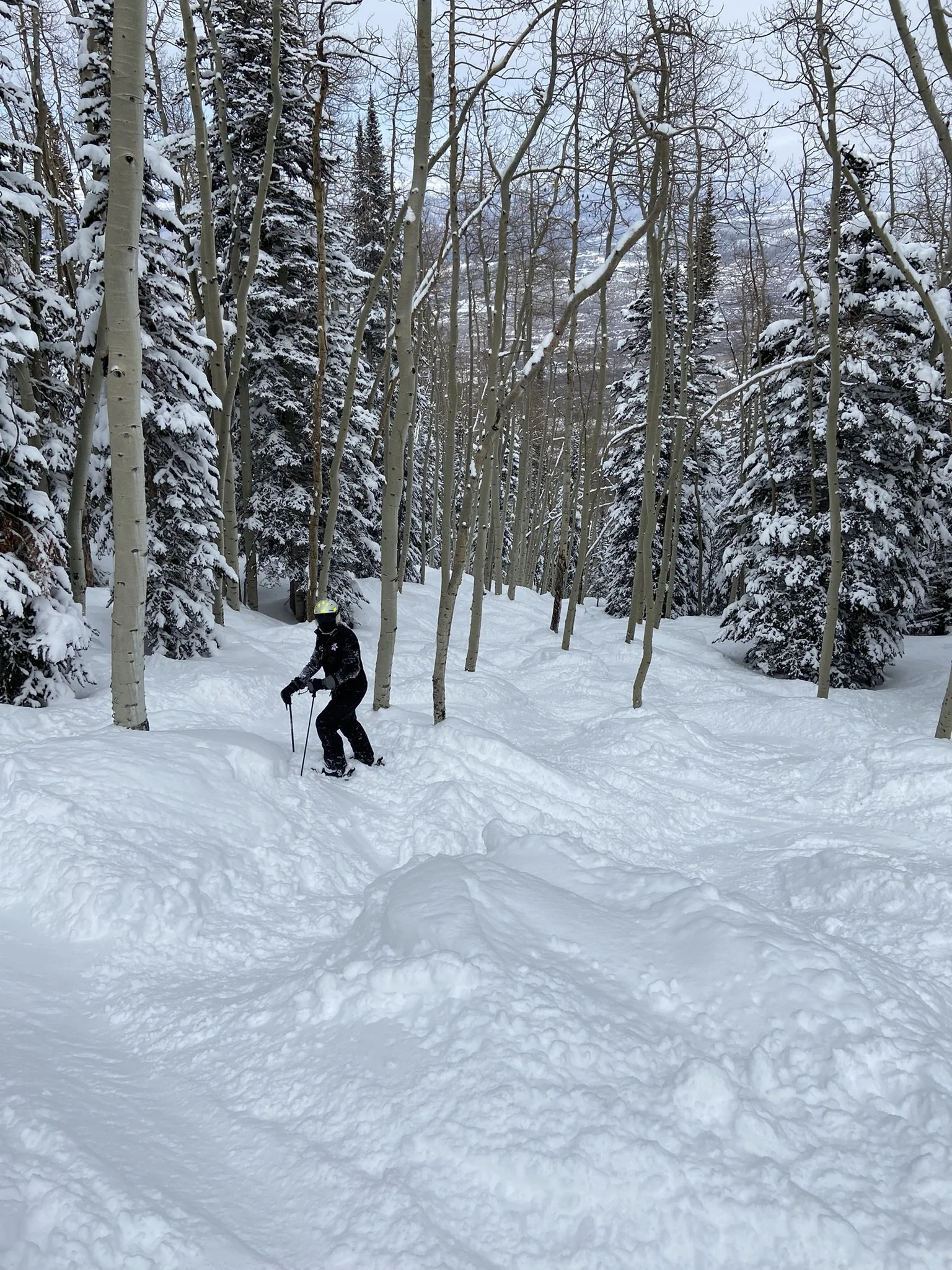
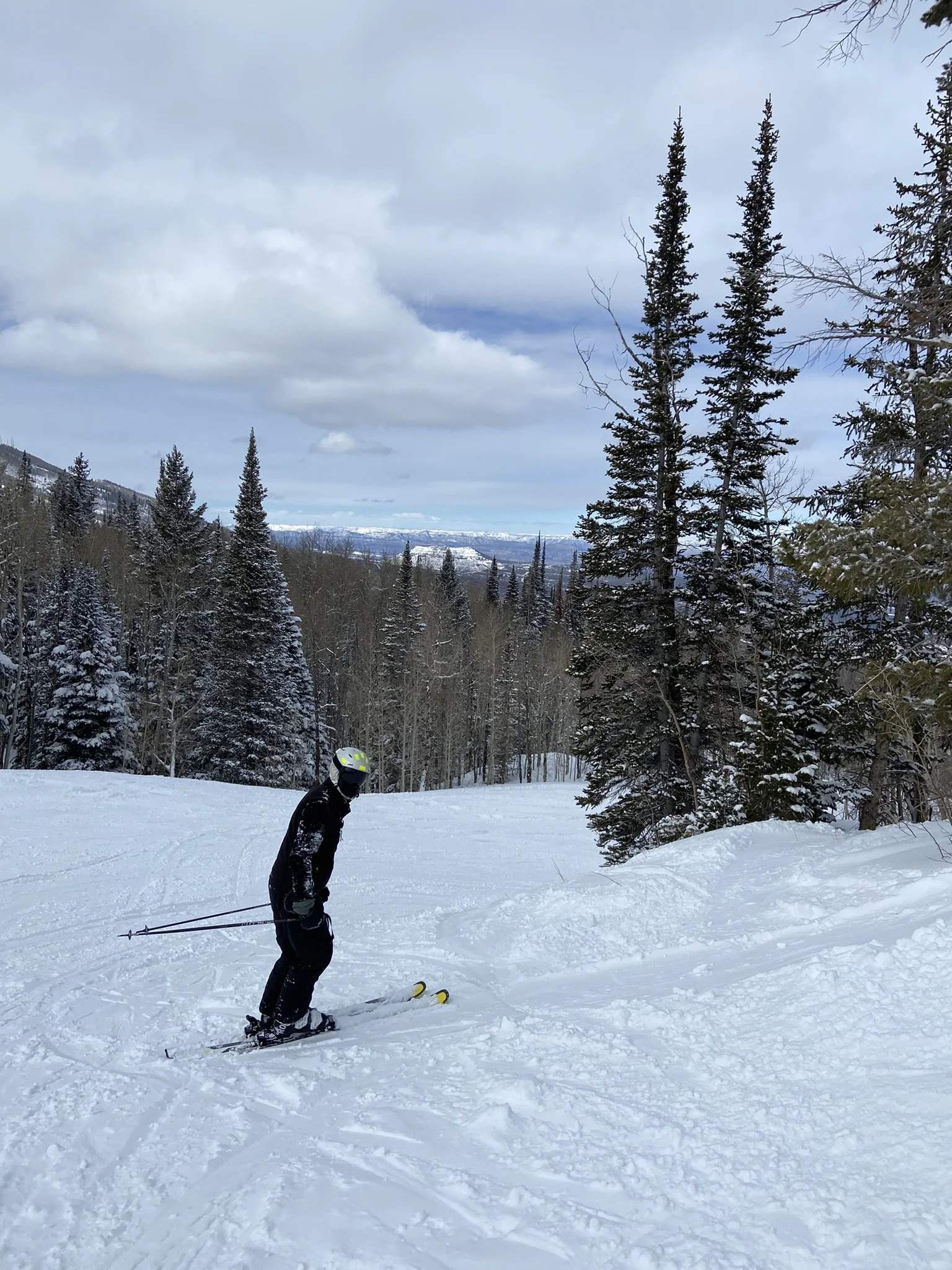
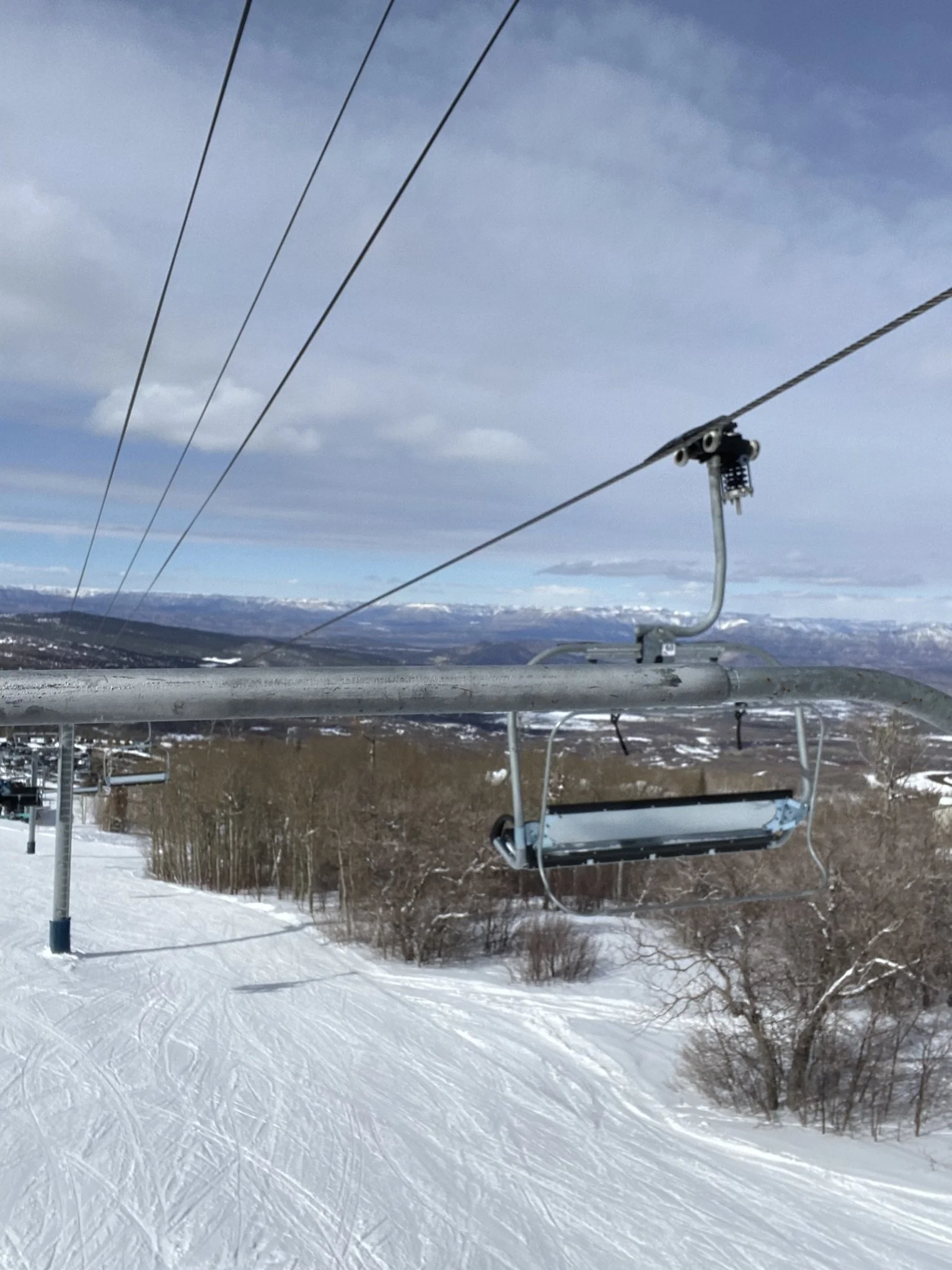
advance the slideshow below to see some views from around the mountain…
Videos
First run of the day, we had about 8 inches of fresh powder resting on a base layer snowpack softened by several recent snowfalls. Amelia was giddy as a school girl, and took off ahead of me down the moguled diamond. Much of the video did not turn out well, as it was all I could do just to keep up. I caught some footage, but it was like chasing bigfoot trying to pick out the good clips of this memorable run.
The video below is a montage from the rest of the day.
play the video below to see Powerhorn from Amelia’s camera, including snippets from the drive down into the bowl and back up to the ski area and rare bonus footage of Joel doing circles.
Mountain Stats
The theme for this road trip tour was “small in the new big.” We had the Ski Cooper Season’s pass, giving access to pass partners at multiple smaller ski areas, including Powderhorn.
Powderhorn vertical drop (true-up) is just over 1,500 feet — about the same as Arapahoe-Basin (although A-Bay is taller max-min, see Figure 12). … Near the low-end of the distribution among its Colorado peers. Of course, Wolf Creek and Monarch are also among our favorites, so when it comes to vert, bigger isn’t always better.
Figure 12: Colorado ski areas by vertical drop. Powderhorn is at the low end of the distribution… one of the smallest in the state
Positioned between 8,000 and 10,000 feet of elevation, Powderhorn is not remarkable for its stats as Colorado mountains go. There are only 3 major resorts in Colorado whose lifts do not go above 10,000 feet - the other two being Sunlight, and Buttermilk (which, arguably don’t count as “major”, see figure 13)
Figure 13: Colorado ski areas base and peak elevation. Powderhorn is one of only 3 major resorts in the state with max elevation less than 10,000 feet.
So Powderhorn may be somewhat challenged for elevation relative to its peers in the region. This may be a disadvantage in terms of overall season length. It may also be a big advantage for anyone prone to altitude sickness.
The mountain has its climatic advantages also… especially the potential for temperature inversions (refer back to Figures 10 and 11).
Powderhorn is not unusually steep. There are some nice diamonds under the Flyer chair, and some nice steep glades under the West-end chair. But if you are looking for extreme skiing with severely steep drops and death-defying diamonds, you will not find them here. For us, this is a good thing, especially on a powder day. Figure 14 shows an elevation profile under the main lift line. Pallavicini (Pali) at Arapahoe Basin is shown for reference.
Figure 14: Elevation profile along a fall line under the main lift. Arapahoe Basin Pali Trail profile shown for comparison
Figure 15: Colorado ski areas by average annual snowfall
Average annual snowfall at Powderhorn is about 250 inches
Although low by comparison to higher elevation high-traffic resorts, probability of finding untracked powder may be much greater, because the skier traffic is also below average.. 250 inches is plenty of powder, if it doesn’t get all tracked out.
Convenience
The age of the mega-resort has changed the ski vibe. At Colorado’s popular tourist destinations, you have to figure out where to park, pay to park, take the shuttle, walk across the village, pay for a locker, then queue in a long lift line… only to eventually drop into a bunch of tracked-out snow, packed by all those crowds in front of you.
…but not at powderhorn…
LIFTS
The entire ski area is covered by only 2 main lift lines. The base area lift (FlatTop Flyer) is a comfortable high-speed detachable quad with foot rest. The other (West-End) is an old-fashioned fixed-grip double chair.
LIFT LINES
there were several dozen people queued up for first chair, after that we never waited in a line
Figure 16: there’s room for friends on a powder day … at powderhorn
Parking
parking at powderhorn is easy… one thing to know, the first lot we encountered was an employee lot.. the guest lot is next up hill.
Lodge
The lodge area is simple, yet luxurious.. plenty of space with free cubbies and big round tables. Very accommodating for bring-your-own bags - they even have microwaves. nice.
Monarch made us leave bags in car. suck. Score +1 for powderhorn.
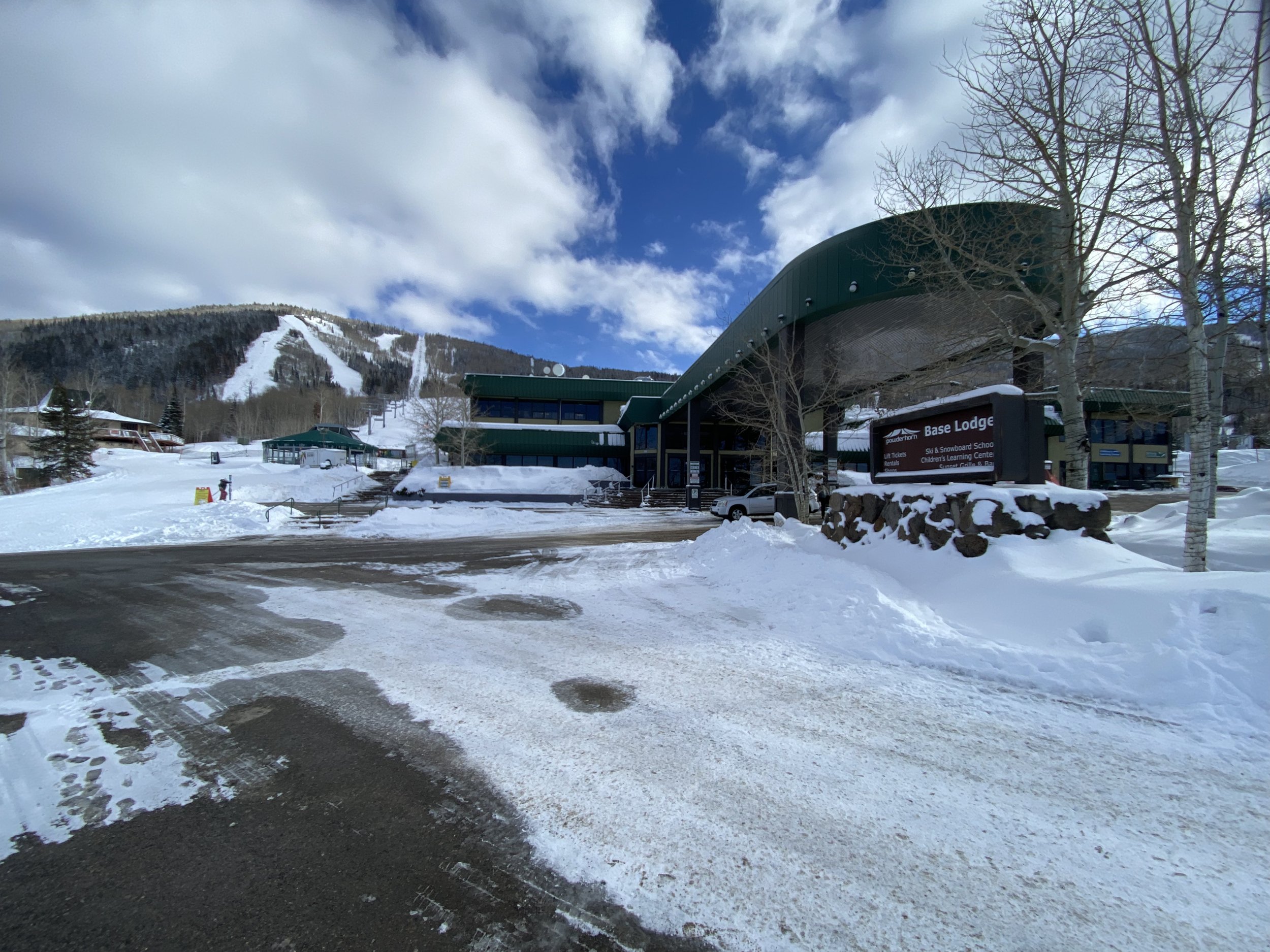

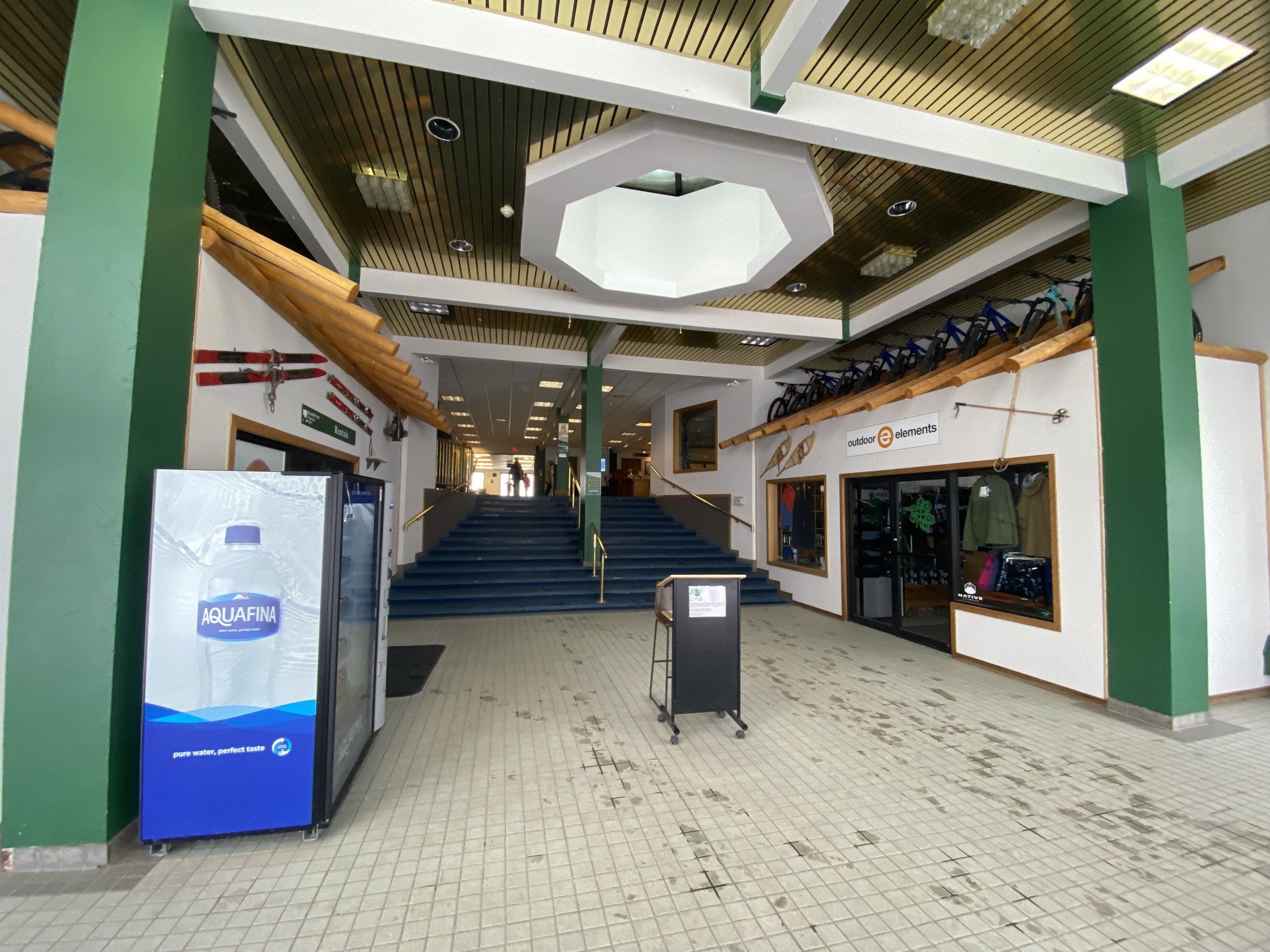

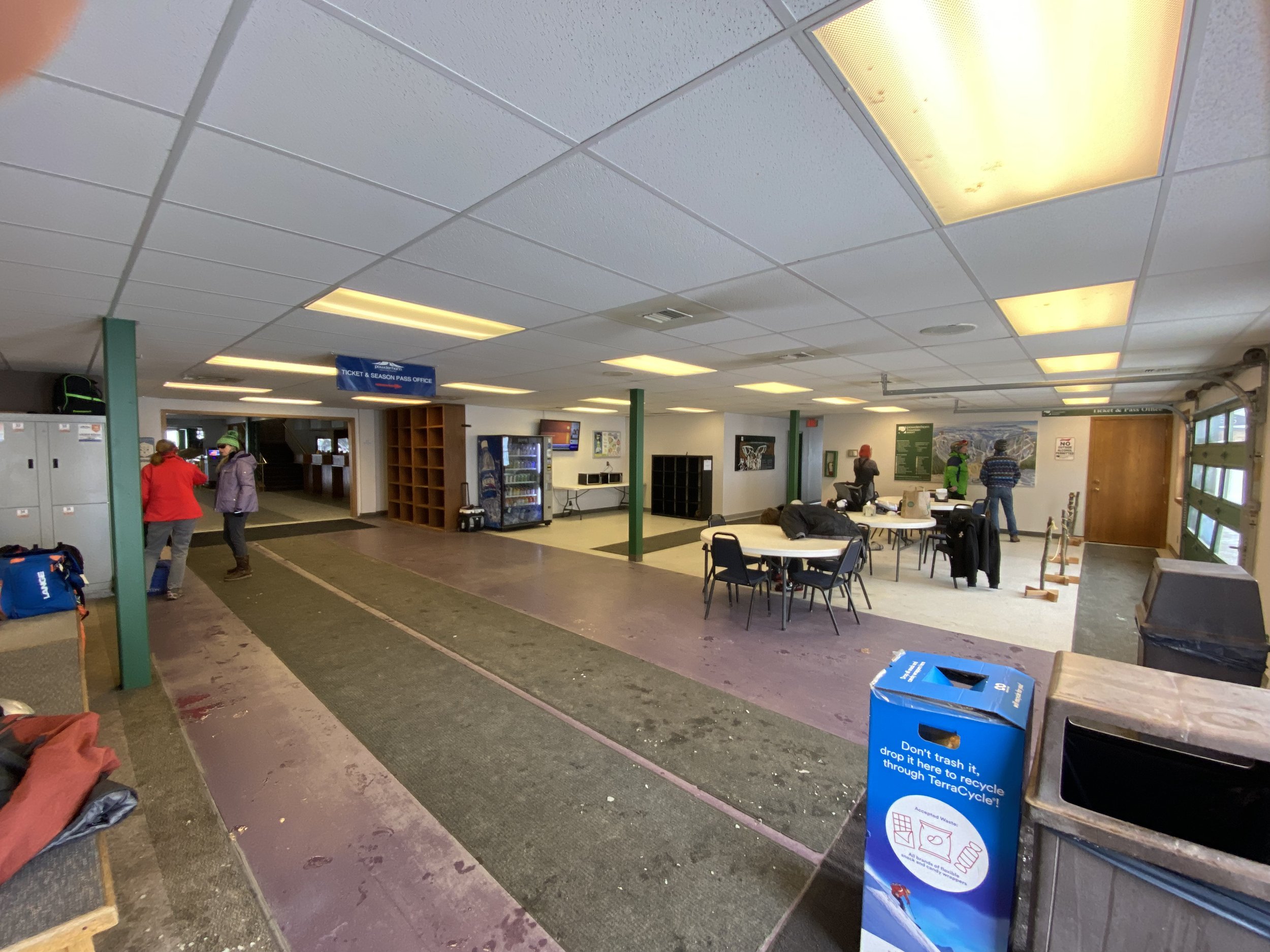
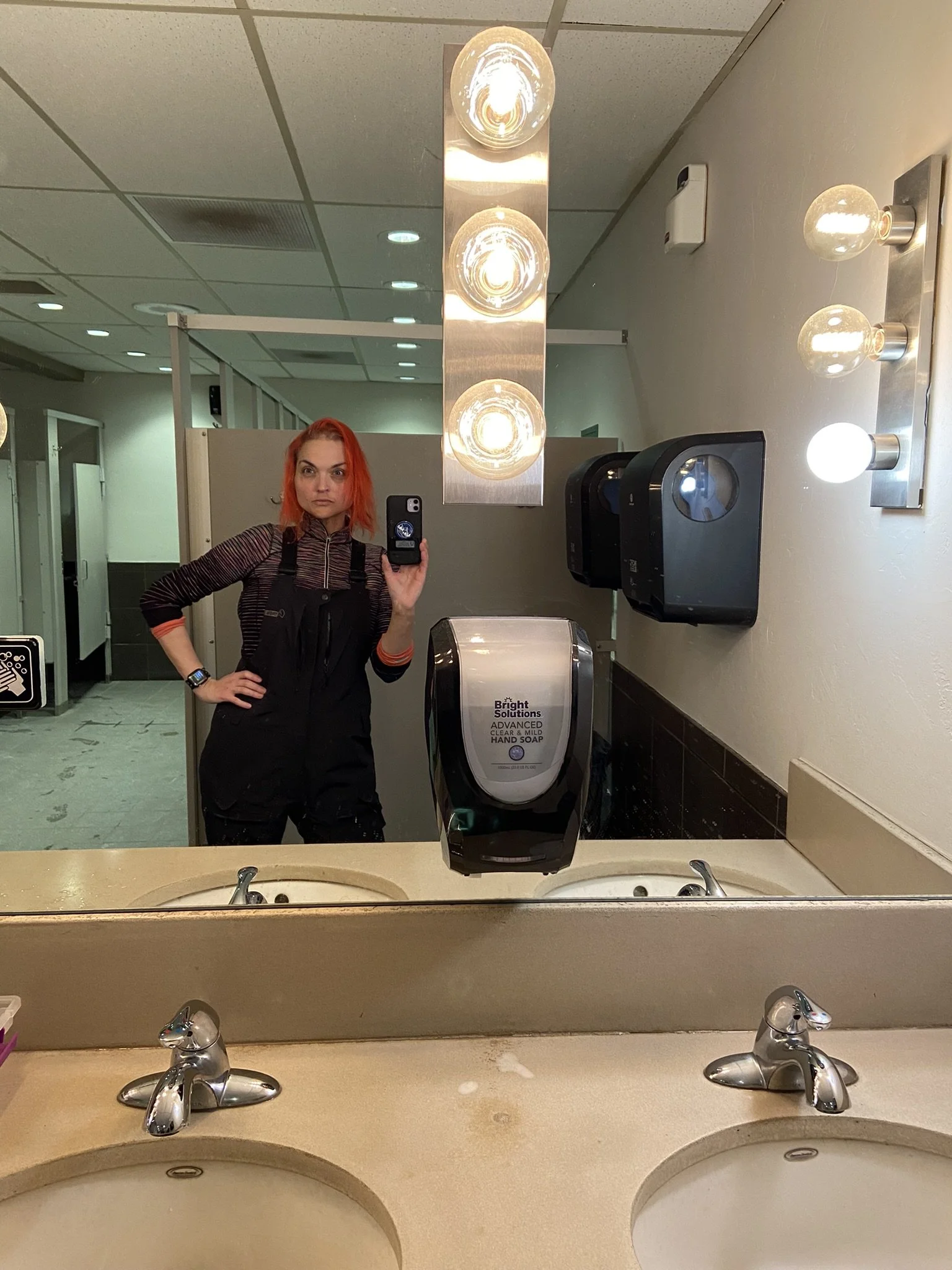

So powderhorn may not hold many superlatives .. not the biggest, highest, steepest, nor most snow .. but it is friendly, comfortable, and an ideal destination for powder hunters wanting to ski away from the beaten path. With a fascinating origin story from ancient volcanoes, and on the world’s largest flat-top mountain, it is a scenic drive and well worth the extra miles.
